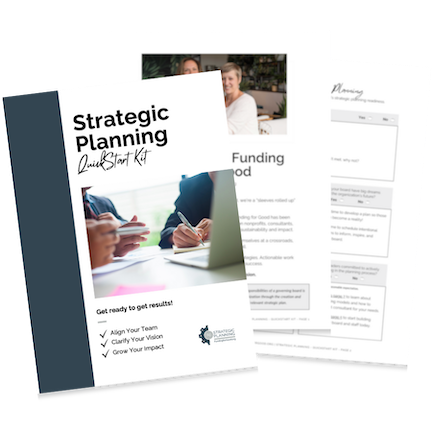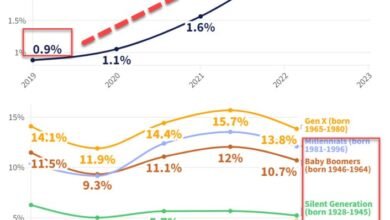
ESSAY SAUCE
FOR STUDENTS : ALL THE INGREDIENTS OF A GOOD ESSAY

Essay: The importance of human resources management (HRM)
Essay details and download:.
- Subject area(s): Management essays
- Reading time: 8 minutes
- Price: Free download
- Published: 21 February 2021*
- File format: Text
- Words: 2,325 (approx)
- Number of pages: 10 (approx)
- Tags: Human resource management essays
Text preview of this essay:
This page of the essay has 2,325 words. Download the full version above.
Introduction
Organizations are made of among others, human resources (HR) which is the most valuable asset in today’s dynamic world. Indeed, it is people and not organizations that constitute an organization. Achievement of organization’s objectives depends on the individually and collective efforts put in by its work force. Human resources management (HRM) may be defined as the coherent as well as strategic maximization of human resources capital in an organization towards making a return on that investment ( Gold & Bratton, 2001 ).
The practice, in its efforts, effectively attempts to maintain a ‘fit’ between the employees and the organization’s overall strategic direction. Unlike technology and processes, people have a soul, aspirations, feelings and emotions. As such, the concept of people as an asset, do not indicate perceiving them as commodities. In managing people, the manager must practice disciplines based on psychology, sociology, industrial relations as well as industrial engineering and economics. In achieving an organization’s objectives, it is possible to adjust the technology employed by increasing production speed as well as reducing the machines’ downtime. For a person, who has a soul, ability to reason and act in response, it is hard to alter the person’s working speed as well as the duration. Proper management of human resources leads to a motivated workforce, a development to loyalty and an assurance of survival and success of an organization.
This paper pays a close look at the practice management of human resources in an organization. This will encompass the importance of the practice, functions within this office and some of the motivation techniques that can be used as well as their role in achieving organizational objectives. Furthermore, the paper will focus an attention to a reputable organization in determining the applicability of incentives and compensation in HRM. Every organization has its strategic future which is broken down into objectives that are measurable and comprehensible, so that the workforce can implement ( Snell & Bohlander, 2009 ). The sensitivity and value placed on organizational strategic plan cannot be left in the hands its employees if they are incapable or not motivated. The organization has a responsibility not only to invest heavily in technology and detailed professional processes but also on its workforce and strategic management policies.
Importance of HRM
HRM as a practice significantly offers support and advice to the line management within an organization. Management of human resources must ensure an attraction, preservation, loyalty and development of highly profiled caliber of people/workforce in order to provide a competitive advantage necessary for the survival and success of the organization. The image of an organization, which develops the goodwill, is largely dependent on how well its human resources are managed (McCoy, 1999). The management of the human resources assumes the following roles. First, HRM manages the demand for human resources. Economies in which organizations are based are dynamic. There are economical shifts of growth and decline that require counteractive measures within an organizations workforce. The said measures demands both quantitative and qualitative procedures within the workforce. The practices of retrenchments, hiring, early retirements and the contract renews for the experienced are all structural adjustments that responds to economical changes affecting organizations.
Second, HRM is responsible in managing social pressure in provision of the desirable environment for the workforce. The hygiene and safety of the working environment must be always maintained as it is a motivation factor in employees’ performance. The provision of appropriate protective gear while working, pollution free environment and other working conditions is a paramount concern for the HRM office Berger, 2008). Third, HRM is important in managing political pressure usually generated by calls to hire from local labor market irrespective of the resultant factors of cost and knowledge/skills. Though it is ethical to hire from the contextual economy, political pressure should not compromise the quality and quantity of organization’s production and a resulting failure in achieving the organization objectives.
HRM also manages the technology by hiring the right workforce or alternatively developing/training the existing workforce in response to technological change. Changes in technology can contribute to obsolescence of the working force which would spill over to the organization not achieving its objectives (Jackson, 2007). HRM office must always find the most appropriate method of counteracting a technological shift by either hiring people with the needed expertise or by training the existing one. In developing an organization culture the later would be more appropriate. If the earlier alternative is adopted, the competition pressure in compensation must be properly dealt with. HRM is also important in designing and management of strategic HR planning. Strategic HR planning is the informed projection of the organizations needs for the appropriate employees, both in quantity and quality, and balancing off this with the organizations ability to sustainably meet the demands of those employees for a substantial period of time in the future. As such, the budgetary constraints associated with right hiring are checked. HRM needs to make these projections in agreement with the line/functional management’s assumptions.
It is also the responsibility of HRM to initiate, alter and manage job design. Job design is the arrangement/rearrangement of work that is aimed at checking or overcoming employee’s job dissatisfaction and alienation resulting from repetitive tasks. In curbing this state, the HRM office should conduct job enrichment, job rotation, job enlargement and job simplification exercises. All these procedures are aimed at raising productivity levels which is the ultimate goal of the HRM’s office. In cases of mergers and acquisitions, it is the sole responsibility of the HRM’s office to rationalize, orient and harmonize the human resources in the involved organizations. The fundamental issues behind mergers and acquisitions are, more often than not, undesirable and unwelcome by employees ( Bilsberry, 2005 ). The task of making an otherwise unpleasant issue acceptable lies squarely at the HRM’s office. Moreover, since work environments are different across organizations, the HRM must orient the various workforces involved to the new objectives and/ or organizational culture.
Finally, the HRM is responsible in managing implementation of change. Change may be in terms of process, organizational structure, systems and culture among others. Changes are the inevitable twists that affect the normal and known paths through which an organization operates. Some of the aforementioned twists arise internally from the organization’s need to achieve new status. Others are externally experienced due to the shifts in the business environment. The issues aforementioned under the discussion are achieved through the functions of the HRM office.
Functions of HRM
Generally, HRM management can be subdivided into three interlinked phases. The practice functions include recruiting qualified human resources, managing the employees in the working environment as well as preparing and enforcing exit of the employees from the organization. The process of recruiting employees arises from the organization’s need to properly position itself in the economy. Ideally, recruitment should follow an order closest to; vacancy advertisement, selection of potential candidates, interviewing and contracting the successful candidate(s). Once in the organization, new employees are inducted and trained. It is during work performance that issues such as motivation, compensation development, disciplinary actions, performance appraisals, career planning / development, counseling, talent management, safety management and staff communication are conducted (Gold & Bratton, 2001).
The employees continuously offer their service to the organization under the existing HRM measures until they exit. Exit may result from retrenchment, obsolescence, retiring, resignation or termination of employment. The HRM at this phase has a responsibility to counsel and prepare the exiting employee for the challenges and opportunities awaiting the employee in the future. The office should ethically hand over all the legal documents and benefits to the exiting employee for positive development of the organization’s goodwill/reputation in the corporate world. If need be, the HRM should have a succession plan for implementation at this phase. Motivation as a HRM activity can completely change the perception of employees while in the work environment. Different people in the workforce are motivated differently across and longitudinally with time. Compensation and incentive is a major motivation element that is easily applicable in many organizations since, almost every employee joins an organization with a sole/major purpose of earning.
Compensation and incentives HRM
An incentive can be defined as any factor, that can be financial or non financial that accounts for preference or stimulates/enables a specific course of action. It can as well be said to be the bonus paid on successful achievement of performance objectives. Compensation is the art of offering/giving money or something else, which can easily convert to money, for purposes of paying for work done. In general, compensation and incentive can be referred to a compensation package. A compensation package is the value placed on an employee as presented to that employee. Compensation can be categorized into three categories. First, there is non monetary compensation. This is the benefit received by an employee which cannot be tangibly valued. Such can include social and career rewards. Job security, recognition, opportunity for growth, flexible working hours, subsidized housing, magazine subscription, laundry services, elder care, are some of the non-monetary compensations (Berger, 2008). Second, compensation can be direct which is the employee’s base wage/salary expressed as salary or hourly wage as profit sharing bonuses paid based on performance. Finally, compensation can be indirect. The later includes facilities like health insurance, paid leave, moving expenses and child care being provided by the employer.
There is a corporate general consensus insisting on relating pay with performance for effectiveness. This may not necessarily be applicable in sectors such as agriculture where many performance results are dependent on factors beyond organization and employee control. Whichever the compensation used, it should also be fair with the market and not discriminating against some employees (Campbell, 2006). A job evaluation should be conducted in placing a value on employee. In such an evaluation, compensable factors such as experience, education level and job responsibility should be considered. Moreover, employees should be involved when considering their indirect compensation needs such as paid vacation, retirement planning, childcare among others. The HRM officer should regularly review the compensation package from time to time to maintain its fairness, equitability and competitiveness.
Importance of compensation and incentives in HRM practice
Use of compensation and incentives is an importance practice in HRM as it has the following advantages. First, to many employees, the basic purpose for joining an organization is to secure a pay. The value placed in such a pay and not necessarily the amount/size motivates the employees more, and as result higher productivity levels are reported. Second, compensation facilitates hiring, retention, promotion and evaluation of the workforce. Without mentioning aspects of compensation, the HRM office might find it impossible to convince people to join the organization to work or even the existing employees to assume higher responsibilities (Armstrong, 2006). Third, compensation displays legality of a contract/employment. For a contract to be valid there has to be a consideration, which is partly what a pay or remuneration package serves. Compensation, especially bonuses, which practice sharing of profits with the employees, creates a sense of belonging to the employees. This is extremely important in securing employees’ loyalty during hard times in managerial practices.
In addition, compensation assists in valuing an organization as well as determining its future. Once the HRM office is capable of properly remunerating workforce, the employees are almost assured of their organization’s survival. Usually, when an organization is going under receivership, employees are the first victim as there is reduced employee compensation, which may in acute scenarios deny them their basic livelihood. Finally, compensation and incentives are the easiest motivational practices available for use by the HRM. This is because compensation is directly linked to employee’s welfare more than the improvement of working conditions (McCoy, 1999).
HRM at Coca Cola Company
Coca Cola Company is one of the leading beverage production companies. The firm that traces back its existence in 1886 ascribes to the philosophy that, it is people and not technology creates an effective organization. Employees are regarded as assets and as such their health and benefits are highly considered. Benefits compensations and benefits given at Coca cola company include a basic pay, medical facility, bonuses, picking and dropping of employees to and fro work station, gratuity fund as well as social security. The company has never performed downsizing exercise during its existence which displays a good relationship between the company and the employees (Berger, 2008). The company also practices an open door policy. Open door policy provides an opportunity for feedback from employees and vice versa. Compensation package review is objectively done from the annual performance evaluations. At the beginning of every year, HRM office communicates the objectives of the company and reviews their achievement at the end of the same period. The training policy for employees is well established to ensure that employees do not become obsolete. For example, new employees get a three month paid training while existing employees get a full free on new technology before they can use it. Training of employees is a non tangible compensation that assures employees of their job security.
As drawn from the evaluation above, effective management on human resources requires both scientific and a human relations approaches. The emphasis is both goal oriented as well as human welfare oriented. Any successful organization must invest sufficiently on HRM aspect failure to which the wrong organization culture will be developed. In order to effectively invest on the human resources modern firms ought to institute humane employee relations policies, reviews on package offered, appraise performance regularly, build motivation-oriented culture and possibly institute open channels to assist in participative management practices where employees are deliberately engaged during decision procedures. Conclusively, HR practices are crucial for organizational general performances levels and any move to drive the firms towards higher goals ought to be premised on attainable HR strategic goals. As evidenced, strategic policies crafts a decisive goals’ path for firm’s benefit whilst building effective workforce team.
...(download the rest of the essay above)
Discover more:
- Human resource management essays
Recommended for you
- Social networking and recruitment
- Human resource management (focus on police department)
- Work life balance
About this essay:
If you use part of this page in your own work, you need to provide a citation, as follows:
Essay Sauce, The importance of human resources management (HRM) . Available from:<https://www.essaysauce.com/management-essays/the-importance-of-human-resources-management-hrm/> [Accessed 04-04-24].
These Management essays have been submitted to us by students in order to help you with your studies.
* This essay may have been previously published on Essay.uk.com at an earlier date.
Essay Categories:
- Accounting essays
- Architecture essays
- Business essays
- Computer science essays
- Criminology essays
- Economics essays
- Education essays
- Engineering essays
- English language essays
- Environmental studies essays
- Essay examples
- Finance essays
- Geography essays
- Health essays
- History essays
- Hospitality and tourism essays
- Human rights essays
- Information technology essays
- International relations
- Leadership essays
- Linguistics essays
- Literature essays
- Management essays
- Marketing essays
- Mathematics essays
- Media essays
- Medicine essays
- Military essays
- Miscellaneous essays
- Music Essays
- Nursing essays
- Philosophy essays
- Photography and arts essays
- Politics essays
- Project management essays
- Psychology essays
- Religious studies and theology essays
- Sample essays
- Science essays
- Social work essays
- Sociology essays
- Sports essays
- Types of essay
- Zoology essays

Back to All Posts
The 10 Main Responsibilities of a Nonprofit Executive Director
by Guest Author | Oct 12, 2023 | Leadership Development

This article is by Sean Kosofsky of Mind the Gap Consulting.
While the nonprofit sector is incredibly diverse in how we operate, there is one key position nearly every staffed organization needs: the nonprofit Executive Director or CEO.
Unfortunately, many nonprofit leaders—along with their board and staff—do not have a clear understanding of the executive director’s role, responsibilities, or job description.
This is a mistake and a missed opportunity. Everybody inside a nonprofit should know what the executive director does. It’s time to pull back the curtain and demystify the role.
Why You Need a Clear Executive Director Job Description
Lack of clarity in an executive director or CEO’s role can lead to internal and external challenges. These include misaligned expectations, internal dysfunction, and limited ability to achieve your impact goals.
In my consulting work, I’ve found that when employees and board members learn the specifics of the executive director’s role, there is a newfound appreciation for what these leaders do. Similarly, when the executive director is clear on their goals and role, they are empowered to succeed.
One tricky point though:
The executive director role will look slightly different in every organization.
This is okay! I have been an executive director for five different nonprofits, all of them very different.
The key is making the executive director’s role clear from the very start. That includes a solid job description (you can start with my customizable executive director job description ). You also want to keep that job description updated and shared with the board and staff.
If you are hiring a new executive director, the job description is also important for making sure you find the right person for the role. If the job description is too vague, applicants may have a very different idea of the work and responsibilities involved.
For example, some new executive directors are drawn only to doing program work because it is sexy and rewarding. Others will cling to the administrative or operations work and ignore fundraising.
To be successful, the vast majority of nonprofit executive directors will need to push out of their comfort zone. They cannot outsource or delegate the unpleasant parts of the job (at least not forever).
To help you get started, in this article, I want to go through the 10 key roles of every executive director. Think of this guide as the background to help you craft and customize the most effective job description for your current or future executive director .
Executive Director Role #1: Leadership .
The board technically governs a nonprofit, but the executive director (sometimes called the CEO in nonprofits) runs the day-to-day operations. That means all organizational stakeholders see the executive director as the most visible and clear embodiment of organizational values and commitment to the organization.
The executive director was hired to get results. This means they have to make tough decisions, while also modeling good behavior.
Being a leader, almost by definition, means you won’t be liked by all people. But ideally, you will be respected by most.
The executive director should be able to:
- Articulate the nonprofit’s vision, mission, theory of change, statement of need, unique value proposition, and overall strategy and direction of the organization.
- Build alignment across the organization. This doesn’t mean everyone must agree on everything, but everyone should be rowing in the same direction. If this isn’t happening, it’s the ED’s job to uncover the misalignment and make the correct adjustment.
- Serve as what I like to call the “ Chief of Enthusiasm and Optimism .” This definition of a nonprofit CEO emerged from my experience working in political campaigns. In any campaign, even if the candidate is going to lose, they and the campaign manager must exude hope, optimism, and a bold vision, or your base of support will dry up. It is the same for executive directors. Donors, volunteers, and staff will have lower morale and probably leave if the executive director is not also this kind of CEO.
- Embrace ambiguity. The executive director must also be comfortable embracing ambiguity because sometimes they need to proceed when the field ahead isn’t obvious. Leadership means being able to navigate or avoid dysfunctional conflict (personal and emotional) while embracing functional conflict (professional and healthy disagreement about strategy and direction). Leaders also should work to interrupt groupthink and mission creep . They should be aware of group dynamics and foster healthy differences of opinion.
- Ask hard questions. Executive directors should be attuned to cognitive biases that distort organizational decision-making. Leaders should ask: “Are we doing things right, or are we doing the right things?”
Executive Director Role #2: Fundraising
Fundraising is the one part of nonprofit leadership that I routinely see executive directors try to give away. Yes, the board and staff have key fundraising roles. But at the end of the day, the executive director must provide fundraising leadership and ensure the funds are there to execute the budget.
The executive director is responsible for creating the conditions for fundraising success (vision, materials, pitch, call-time, training, technology, etc.).
Executive directors should be providing direction while making themselves available to the development staff and board development committee. I am also a firm believer that nonprofit boards need to fundraise , though executive directors and staff will need to actively support that board fundraising.
There are, of course, a few fundraising roles that executive directors cannot delegate. For example:
- Donors often want to talk to the executive director, not necessarily the development staff. Especially with major gifts, the executive director should be the person bringing in the most dollars from major individual donors. In practice, this means the development staff set up the meetings, but the executive director closes the deal.
- The executive director makes the powerful pitch from the podium at a gala or other major event. The executive director does not need to be a charismatic extrovert to accomplish this. But they must know how to effectively persuade people to dig down and contribute.
- The executive director creates a culture of fundraising. This means making sure board and staff can tell the organization’s story well. It also means helping create as many “right places at the right times” fundraising moments.
Every executive director position I have been offered (five) has probably been because I promised to do what the other applicants hated: fundraising.
I have heard every possible excuse for avoiding fundraising. “I was brought on as a subject matter expert,” or “I was told I didn’t need to fundraise,” or “We have an endowment.”
Resist the temptation to succumb to these excuses. Step into your leadership and become a great fundraiser.
Executive Director Role #3: Board Development
The board owns the nonprofit.
That’s uncomfortable to read, but it’s true. All not-for-profit corporations are still corporations, and all owners of all corporations are responsible for revenue. It’s corporate law.
The executive director works in partnership with the board and for the board. However, because the executive director is staff, it is considered a best practice to assist the board in their operations, administration, planning, and information dissemination.
Executive directors should help build, sustain, and strengthen all board functions, like meetings, policy compliance, and committee work. The executive director should work to build alignment while also maintaining role clarity (division of labor between the board/chair/CEO).
The best investment an executive director can make for their own tenure is supporting the board and building rapport with board members, especially the board chair.
Executive Director Role #4: Financial Management
An executive director must demonstrate competence in reading, creating, and understanding financial documents, including budgets, cash flow, income statements, balance statements, and statements of functional expenses.
The executive director does not need to understand bookkeeping software. But they do need to understand the financial picture.
This means being familiar with the basics of 990 tax returns, audits, and compliance. Creation and adherence to financial controls are also important.
If this is all Greek, then the executive director should get some training. My favorite company for helping nonprofits is Fun with Financials .
Executive Director Role #5: Human Resources (HR)
When it comes to human resources, the executive director must ensure that onboarding, recruitment, retention, management, development, and compliance are carried out with excellence.
This means the executive director is responsible for delegation, decision-making, creating clear staff roles (job descriptions), and supervising collaborative tasks (projects/meetings) to ensure that they are done efficiently, inclusively, and with respect.
Some executive directors hire a deputy director to help with this, but ultimately it is still the CEO’s job.
Executive Director Role #6: Diversity, Equity, and Inclusion (DEI)
In seeking to achieve the organization’s mission, executive directors will constantly be challenged by questions of diversity, equity, and inclusion. Your organization is better positioned for mission attainment, funding, and building your base if you make this a priority.
Increasingly, community stakeholders will expect your organization to be making progress so that women, people of color, LGBTQ people, people with disabilities, or religious minorities don’t feel disrespected, excluded, or isolated in their roles.
Many organizations believe that if they simply prohibit biased behavior, they have done all they need to do. But we live in a culture that is filled with insensitive comments, implicit bias, and unequal treatment.
We owe it to the people we serve (and to everyone else) to dismantle these inequities whenever possible. This is hard work, which means it requires a certain level of humility, patience, and diligence to root out oppressive and biased patterns.
DEI work, at a minimum, may take the form of respecting the pronouns people use, noticing if women and people of color are being interrupted or passed over in group conversations, and ensuring that you compensate people fairly.
It may mean training, ongoing conversation, and learning. But it is not, I repeat, it is not some optional add-on.
You cannot reach your mission without DEI work, because if you try, you will leave people behind and you will never attract the top talent to your team.
Executive Director Role #7: Operations and Technology
Executive directors must create the conditions for success at all levels within the nonprofit. This means:
- Ensuring the organization operates correctly and functionally. This means vendors and staff get paid, obligations are met, meetings aren’t missed, and you have safe working conditions or physical space for your service population.
- Ensuring proper hardware and software are in place for fundraising, collaboration, document creation and storage, communication, productivity, and record keeping.
- Creating and maintaining policies to ensure the use of the most relevant and efficient technology and planning/budgeting for upgrades needed for future success.
Executive Director Role #8: Programs and Activities
Executive directors must work with the board, staff, and other stakeholders to ensure that the mixture of programs and activities is achieving the organization’s mission.
CEOs may not be “in the weeds” on program matters, but they should be creating the big picture with the board, while also ensuring the quality and effectiveness of each program and activity. This comes with internal and external expectations.
- Stakeholders expect the executive director to set the organization’s strategy and achieve outcomes. This includes tackling big-picture strategy questions, like balancing charity vs advocacy. For example, should the organization feed the hungry or work to end hunger or both?
- The executive director needs to ensure the nonprofit’s strategic vision is clear to internal and external stakeholders. For example, in a nonprofit strategic planning process , the board, executive director, and staff all have key roles to play. However, the executive director is responsible for serving as a liaison between the board and staff to ensure implementation of the plan.
- Deploying staff most effectively is essential. Staff play a key role in the day-to-day leadership and implementation of programs. Their technical and subject matter expertise is vital to an organization’s success. Remember, just because you are responsible for overseeing almost everything, doesn’t mean you have to know everything.
- Leaders of nonprofits must be open to accountability from stakeholders. If you are naturally defensive, you may end up isolating yourself. People appreciate authenticity and vulnerability on your journey as an executive.
- The executive director should also be an industry thought leader and be on top of the trends and developments in your sector. This usually just happens in the normal course of the job, but you’d be surprised (or maybe not) how many leaders get stuck in an old way of doing things.
Executive Director Role #9: Community Relations and Communication
The executive director should develop and maintain strong relationships in their sector and their region, with peers, donors, industry associations, the media, and more.
Strong and strategic nonprofit leaders build alliances and strategic partnerships. Executive directors should be collaborative with other organizations and be transparent.
Make sure you communicate regularly with stakeholders and the public. Normally this comes in the form of regular impact reports, an annual report, public events, or newsletters.
If you are too insular, you will miss many opportunities to help your organization and your own career. When you engage the public, you’ll find future donors, leaders, and volunteers. If you keep your head down in your work, you’ll miss it all.
Executive Director Role #10: Compliance and Best Practices
As an executive director, your job is to get results while minimizing risk to the nonprofit organization.
Stay in compliance with all laws and regulations. Create systems to monitor all of this. Even beyond legal compliance, ensure your organization is meeting the highest standards possible for your industry and region.
Be sure you understand the legal frameworks of creating and running a nonprofit. There are federal rules to follow from the IRS and elsewhere. There are also rules in the states you are operating or are incorporated in (if they are different), and there may be local rules as well.
Finally, being a successful executive director requires having good judgment. None of the tasks outlined in this guide are easy. They certainly can’t be checked off on a list.
Leading a nonprofit organization is a juggling act. Sometimes you will fail, and that is OK. No one runs an organization or a company without mistakes. Running a nonprofit should be joyful. Sure, it can be stressful too, but by keeping a bird’s eye view on the 10 areas outlined here, you can safely say you have done what you were hired to do.
For more support, you can grab the Top 10 Responsibilities of a Nonprofit Executive Director Infographic that goes along with this blog post and my Free Executive Director Toolkit .

Get Your Free Strategic Planning QuickStart Kit
Align your team, clarify your vision, and grow your impact - starting TODAY!
It's on it's way! Are you ready to get started? We hope so because the download link for the checklist is going to hit your inbox any second now.
We will protect your information, will not share it, and will not misuse it.

No products in the cart
Module 7: Human Resource Management
Purpose of human resource management, what you’ll learn to do: explain the purpose of human resource management for both the organization and individuals.
In this section, you’ll discover how human resources functions within a corporation. You’ll find out how HR decisions help the company to meet its goals, and how HR management can make or break a company’s reputation. You’ll also learn about the laws and policies companies must follow when making decisions about HR policies.
Learning Outcomes
- List the functions of human resource management.
- Explain how HR decisions reflect the corporate strategy.
Susan Fowler is an engineer who writes a blog about her experiences. She used to work at Uber, the popular ride-share company. But although Uber did interesting work and she liked her job, her boss was harassing her.
After many attempts to change the situation by going to the Human Resources department at Uber, Susan realized that HR was not interested in supporting her. It was willing to break the law and allow her boss to get away with sexual harassment. But Susan wasn’t willing to accept this behavior from her employer. She spoke up and got others to speak up with her.
The result: Uber not only lost a great employee but also lost the respect of the public. Since Fowler started writing about her experiences, Uber has lost money, employees, and opportunities to grow.
Here is some of what Susan Fowler says about her experience at Uber:
On my first official day rotating on the team, my new manager sent me a string of messages over company chat. He was in an open relationship, he said, and his girlfriend was having an easy time finding new partners but he wasn’t. He was trying to stay out of trouble at work, he said, but he couldn’t help getting in trouble, because he was looking for women to have sex with. It was clear that he was trying to get me to have sex with him, and it was so clearly out of line that I immediately took screenshots of these chat messages and reported him to HR.
After reporting the situation, Fowler assumed HR would do the right thing. At the very least, it would reprimand the manager for breaking the company’s code of ethics. Instead, says Fowler, HR did the opposite:
I was told by both HR and upper management that even though this was clearly sexual harassment and he was propositioning me, it was this man’s first offense, and that they wouldn’t feel comfortable giving him anything other than a warning and a stern talking-to. Upper management told me that he “was a high performer” (i.e. had stellar performance reviews from his superiors) and they wouldn’t feel comfortable punishing him for what was probably just an innocent mistake on his part.
Instead of confronting the manager, HR told Fowler she could leave the team. Her other option was to stay on the team—but if she stuck with it, she should expect a poor performance review, even if she did a good job. Fowler left the team but started asking other women about their experience at Uber. Over and over, she heard stories similar to her own. She even learned that HR had lied to her: her manager had been reported for sexual harassment many times but had never been disciplined for his behavior.
Finally, after trying and failing to get an appropriate response from upper management, Fowler quit her job. She then went on to write about her experience, sharing the details of Uber’s poor management with the world. [1]
A good HR department could have handled all of Susan’s concerns legally and appropriately, and Uber could have avoided a great deal of trouble. Investors voted with their feet, and Uber’s stock lost $10 billion, according to CNBC. [2] At best, this is a lost opportunity that will cost the company far more than managing within the law.
The Functions of Human Resource Management
Managing employee conflicts and legal issues is only part of HR’s function. In fact, HR is a key department in any company, and it is responsible for many areas. Each of these areas can be categorized into the main functions of human resource management:
Human resources management can also play an important role in strategic planning and company growth. For example, HR professionals take part in:
- Planning to hire or transfer employees when a company grows.
- Training new employees as the company makes changes or expands.
- Developing incentive programs to help the company compete with other employers.
- Researching laws and policies related to employees in other states or countries.
- Setting up employee transportation, moves, and other logistics as needed.
Why is all this important? HR is a specialty that involves a great many legal details. Mistakes in employee benefits, mismanaging sensitive employee records, or glossing over company ethics policies could land a company in legal trouble. Lawsuits that go to court have incurred a median cost of $200,000. [3] HR professionals are the people who have the knowledge, time, and responsibility to ensure that employees receive the services, resources, and support they need to be successful at work.
A recent trend is more part-time and contract workers. HR professionals source and hire both and handle the contracts and legal risks.
Practice Question
The following video highlights some of the important work HR managers do in a company, as in this example of the human resources director at Quiksilver.
HR and Corporate Strategy
You might think of HR management as a somewhat standard part of every business–the HR department deals with hiring, training, compensation, safety issues, and so on. But successful businesses don’t take a one-size-fits-all approach to HR management. Instead, they use their HR policies to support the business’s strategic goals and increase their competitive advantage.
In practice, that means making sure the key elements of HR are aligned with the organization’s strategy. For example, if one of your organizational goals is to create innovative products, your HR policies might allow employees a certain amount of time to work on their own ideas. Google does this with its famous “20 percent time” policy that allows employees to spend one-fifth of their time working on a project of their own choosing that they think will most benefit Google. 3M had a similar policy before Google, and it resulted in one of the company’s most successful products: the Post-It Note. Allowing employees time to be creative on the job not only helps attract the types of employees these companies want, but also benefits the company when employees come up with innovative ideas and strategies.
Today’s HR managers need to think less about enforcing compliance rules and tracking simple metrics and more about how policies will help achieve strategic goals. They must align the organization’s people with the desired outcomes. Depending on the business’s strategy, this might mean using a very selective hiring process to find the candidate with the right skills for the job, or using contractors instead of full-time employees to keep costs low. The goal of HR is to ensure that an organization has the right skills, abilities, and knowledge to implement its strategy.
High-performing organizations use HR elements such as job design and diversity management to maximize employee performance. Job design (also referred to as work design or task design) is a core function of human resource management. It’s related to the specification of contents, methods, and relationship of jobs in order to satisfy technological and organizational requirements as well as the social and personal requirements of the job holder. Its principles are geared towards how the nature of a person’s job affects their attitudes and behavior at work, particularly relating to characteristics such as skill variety and autonomy. The aim of a job design is to improve job satisfaction, to improve throughput, to improve quality, and to reduce employee problems (e.g., grievances, absenteeism).
HR managers are also concerned with diversity in the workplace. In a global economy, employing a diverse workforce and celebrating multiculturalism can create or strengthen an organization’s competitive advantage.
Check Your Understanding
Answer the question(s) below to see how well you understand the topics covered in the previous section. This short quiz does not count toward your grade in the class, and you can retake it an unlimited number of times.
Use this quiz to check your understanding and decide whether to (1) study the previous section further or (2) move on to the next section.
- Susan J. Fowler, “Reflecting on One Very, Very Strange Year at Uber,” Susan J. Fowler (blog), Feb. 19, 2017, accessed July 26, 2017, https://www.susanjfowler.com/blog/2017/2/19/reflecting-on-one-very-strange-year-at-uber . ↵
- Anita Balakrishnan, “Scandals may have knocked $10 billion off Uber's value, a report says,” CNBC, April 25, 2017, accessed July 26, 2017, http://www.cnbc.com/2017/04/25/uber-stock-price-drops-amid-sexism-investigation-greyballing-and-apple-run-in--the-information.html . ↵
- Andrea G. Simpson, “What Are Chances a U.S. Business Will Face an Employee Lawsuit?” Oct. 28, 2015, accessed July 26, 2017, http://www.insurancejournal.com/news/national/2015/10/28/386321.htm . ↵
- Purpose of HR Management. Authored by : Lisa Jo Rudy and Lumen Learning. License : CC BY: Attribution
- Job design. Provided by : Wikipedia. Located at : https://en.wikipedia.org/wiki/Job_design . License : CC BY-SA: Attribution-ShareAlike
- Day in the Life--Human Resources. Authored by : Acquire Learning. Located at : https://www.youtube.com/watch?v=bb4RGuQu2Pk . License : All Rights Reserved . License Terms : Standard YouTube License

Privacy Policy

Take Action for the Sustainable Development Goals
The Sustainable Development Goals are the blueprint to achieve a better and more sustainable future for all. They address the global challenges we face, including those related to poverty, inequality, climate change , environmental degradation, peace and justice. The 17 Goals are all interconnect ed, and in order to leave no one behind, it is important that we achieve them all by 2030. Click on any specific Goal below to learn more about each issue and take action.

Goal 1: No Poverty
Economic growth must be inclusive to provide sustainable jobs and promote equality.

Goal 2: Zero Hunger
The food and agriculture sector offers key solutions for development, and is central for hunger and poverty eradication.

Goal 3: Good Health and Well-Being
Ensuring healthy lives and promoting the well-being for all at all ages is essential to sustainable development.

Goal 4: Quality Education
Obtaining a quality education is the foundation to improving people’s lives and sustainable development.

Goal 5: Gender Equality
Gender equality is not only a fundamental human right, but a necessary foundation for a peaceful, prosperous and sustainable world.

Goal 6: Clean Water and Sanitation
Clean, accessible water for all is an essential part of the world we want to live in.

Goal 7: Affordable and Clean Energy
Energy is central to nearly every major challenge and opportunity.

Goal 8: Decent Work and Economic Growth
Sustainable economic growth will require societies to create the conditions that allow people to have quality jobs.

Goal 9: Industry, Innovation, and Infrastructure
Investments in infrastructure are crucial to achieving sustainable development.

Goal 10: Reduced Inequalities
To reduce inequalities, policies should be universal in principle, paying attention to the needs of disadvantaged and marginalized populations.

Goal 11: Sustainable Cities and Communities
There needs to be a future in which cities provide opportunities for all, with access to basic services, energy, housing, transportation and more.

Goal 12: Responsible Consumption and Production
Responsible Production and Consumption

Goal 13: Climate Action
Climate change is a global challenge that affects everyone, everywhere.


Goal 14: Life Below Water
Careful management of this essential global resource is a key feature of a sustainable future.

Goal 15: Life on Land
Sustainably manage forests, combat desertification, halt and reverse land degradation, halt biodiversity loss

Goal 16: Peace, Justice and Strong Institutions
Access to justice for all, and building effective, accountable institutions at all levels.

Goal 17: Partnerships
Revitalize the global partnership for sustainable development.
11.1 An Introduction to Human Resource Management
- What has been the evolution of human resource management (HRM) over the years, and what is the current value it provides to an organization?
Human resource management over the years has served many purposes within an organization. From its earliest inception as a primarily compliance-type function, it has further expanded and evolved into its current state as a key driver of human capital development. In the book HR From the Outside In (Ulrich, Younger, Brockbank, Younger, 2012), the authors describe the evolution of HR work in “waves”. 1 Wave 1 focused on the administrative work of HR personnel, such as the terms and conditions of work, delivery of HR services, and regulatory compliance. This administrative side still exists in HR today, but it is often accomplished differently via technology and outsourcing solutions. The quality of HR services and HR’s credibility came from the ability to run administrative processes and solve administrative issues effectively. Wave 2 focused on the design of innovative HR practice areas such as compensation, learning, communication, and sourcing. The HR professionals in these practice areas began to interact and share with each other to build a consistent approach to human resource management. The HR credibility in Wave 2 came from the delivery of best-practice HR solutions.
Wave 3 HR, over the last 15–20 years or so, has focused on the integration of HR strategy with the overall business strategy. Human resources appropriately began to look at the business strategy to determine what HR priorities to work on and how to best use resources. HR began to be a true partner to the business, and the credibility of HR was dependent upon HR having a seat at the table when the business was having strategic discussions. In Wave 4, HR continues to be a partner to the business, but has also become a competitive practice for responding to external business conditions. HR looks outside their organizations to customers, investors, and communities to define success—in the form of customer share, investor confidence, and community reputation. HR’s credibility is thus defined in terms of its ability to support and drive these external metrics. Although each “wave” of HR’s evolution is important and must be managed effectively, it is the “outside in” perspective that allows the human resource management function to shine via the external reputation and successes of the organization.
Catching the Entrepreneurial Spirit
Human resources outsourcing—entrepreneurial ventures.
Human resources is a key function within any company, but not all companies are able to afford or justify full-time HR staff. Over the last decade, HR outsourcing has become a good business decision for many small companies whose current staff doesn’t have the bandwidth or expertise to take on the risks of employee relations issues, benefits and payroll, or HR compliance responsibilities. This has led many HR practitioners to try out their entrepreneurial skills in the areas of HR outsourcing and “fractional HR.”
Human resources outsourcing is very commonly used by smaller companies (and often large companies too) to cover such tasks as benefits and payroll management. This is an area that has been outsourced to third parties for many years. More recent is the trend to have “fractional HR” resources to help with the daily/weekly/monthly HR compliance, employee relations, and talent management issues that companies need to address. Fractional HR is a growing industry, and it has become the service offering of many entrepreneurial HR ventures. Fractional HR is essentially as it sounds—it is the offering of HR services to a company on a part-time or intermittent basis when the company may not be able to justify the cost of a full-time HR resource. An HR professional can be available onsite for a specified number of hours or days weekly or monthly, depending on the company’s needs and budget. The HR professional handles everything from HR compliance issues and training to employee issues support. Also, for companies that are keen on development of employees, the HR resource can drive the talent management processes—such as performance management, succession planning, training, and development—for companies who require more than just basic HR compliance services.
How does a business leader decide whether HR outsourcing is needed? There are generally two factors that drive a leader to consider fractional HR or HR outsourcing—time and risk. If a leader is spending too much time on HR issues and employee relations, he may decide that it is a smart tradeoff to outsource these tasks to a professional. In addition, the risk inherent in some HR issues can be very great, so the threat of having a lawsuit or feeling that the company is exposed can lead the company to seek help from a fractional HR professional.
HR entrepreneurs have taken full advantage of this important trend, which many say will likely continue as small companies grow and large companies decide to off-load HR work to third parties. Some HR companies offer fractional HR as part of their stated HR services, in addition to payroll and benefits support, compensation, and other HR programmatic support. Having a fractional HR resource in place will often illuminate the need for other HR services and program builds, which are generally supported by those same companies. Whether you are an individual HR practitioner or have a small company of HR practitioners and consultants, fractional HR and HR outsourcing can be a very viable and financially rewarding business model. It can also be very personally rewarding, as the HR professional enables smaller companies to grow and thrive, knowing that its HR compliance and processes are covered.
- What do you believe is contributing to the growth of the fractional HR and HR outsourcing trend? Do you expect this trend to continue?
- At what point should a company consider bringing on a full-time HR resource instead of using a fractional HR resource? What questions should the company ask itself?
Human resource management provides value to an organization, to a large extent, via its management of the overall employee life cycle that employees follow—from hiring and onboarding, to performance management and talent development, all the way through to transitions such as job change and promotion, to retirement and exit. Human capital is a key competitive advantage to companies, and those who utilize their human resource partners effectively to drive their human capital strategy will reap the benefits.
Human resource management includes the leadership and facilitation of the following key life cycle process areas:
- Human resources compliance
- Employee selection, hiring, and onboarding
- Performance management
- Compensation rewards and benefits
- Talent development and succession planning
Human resources is responsible for driving the strategy and policies in these areas to be in accordance with and in support of the overall business strategy. Each of these areas provides a key benefit to the organization and impacts the organization’s value proposition to its employees.
Concept Check
- How has the function of human resource management evolved over the years?
- In what way do you usually interact with human resources?
As an Amazon Associate we earn from qualifying purchases.
This book may not be used in the training of large language models or otherwise be ingested into large language models or generative AI offerings without OpenStax's permission.
Want to cite, share, or modify this book? This book uses the Creative Commons Attribution License and you must attribute OpenStax.
Access for free at https://openstax.org/books/principles-management/pages/1-introduction
- Authors: David S. Bright, Anastasia H. Cortes
- Publisher/website: OpenStax
- Book title: Principles of Management
- Publication date: Mar 20, 2019
- Location: Houston, Texas
- Book URL: https://openstax.org/books/principles-management/pages/1-introduction
- Section URL: https://openstax.org/books/principles-management/pages/11-1-an-introduction-to-human-resource-management
© Jan 9, 2024 OpenStax. Textbook content produced by OpenStax is licensed under a Creative Commons Attribution License . The OpenStax name, OpenStax logo, OpenStax book covers, OpenStax CNX name, and OpenStax CNX logo are not subject to the Creative Commons license and may not be reproduced without the prior and express written consent of Rice University.

- school Campus Bookshelves
- menu_book Bookshelves
- perm_media Learning Objects
- login Login
- how_to_reg Request Instructor Account
- hub Instructor Commons
- Download Page (PDF)
- Download Full Book (PDF)
- Periodic Table
- Physics Constants
- Scientific Calculator
- Reference & Cite
- Tools expand_more
- Readability
selected template will load here
This action is not available.

17.2: An Introduction to Human Resource Management
- Last updated
- Save as PDF
- Page ID 27551

What has been the evolution of human resource management (HRM) over the years, and what is the current value it provides to an organization?
Human resource management over the years has served many purposes within an organization. From its earliest inception as a primarily compliance-type function, it has further expanded and evolved into its current state as a key driver of human capital development. In the book HR From the Outside In (Ulrich, Younger, Brockbank, Younger, 2012), the authors describe the evolution of HR work in “waves”. Wave 1 focused on the administrative work of HR personnel, such as the terms and conditions of work, delivery of HR services, and regulatory compliance. This administrative side still exists in HR today, but it is often accomplished differently via technology and outsourcing solutions. The quality of HR services and HR’s credibility came from the ability to run administrative processes and solve administrative issues effectively. Wave 2 focused on the design of innovative HR practice areas such as compensation, learning, communication, and sourcing. The HR professionals in these practice areas began to interact and share with each other to build a consistent approach to human resource management. The HR credibility in Wave 2 came from the delivery of best-practice HR solutions.
Wave 3 HR, over the last 15–20 years or so, has focused on the integration of HR strategy with the overall business strategy. Human resources appropriately began to look at the business strategy to determine what HR priorities to work on and how to best use resources. HR began to be a true partner to the business, and the credibility of HR was dependent upon HR having a seat at the table when the business was having strategic discussions. In Wave 4, HR continues to be a partner to the business, but has also become a competitive practice for responding to external business conditions. HR looks outside their organizations to customers, investors, and communities to define success—in the form of customer share, investor confidence, and community reputation. HR’s credibility is thus defined in terms of its ability to support and drive these external metrics. Although each “wave” of HR’s evolution is important and must be managed effectively, it is the “outside in” perspective that allows the human resource management function to shine via the external reputation and successes of the organization.
catching the entrepreneurial spirit
Human Resources Outsourcing—Entrepreneurial Ventures
Human resources is a key function within any company, but not all companies are able to afford or justify full-time HR staff. Over the last decade, HR outsourcing has become a good business decision for many small companies whose current staff doesn’t have the bandwidth or expertise to take on the risks of employee relations issues, benefits and payroll, or HR compliance responsibilities. This has led many HR practitioners to try out their entrepreneurial skills in the areas of HR outsourcing and “fractional HR.”
Human resources outsourcing is very commonly used by smaller companies (and often large companies too) to cover such tasks as benefits and payroll management. This is an area that has been outsourced to third parties for many years. More recent is the trend to have “fractional HR” resources to help with the daily/weekly/monthly HR compliance, employee relations, and talent management issues that companies need to address. Fractional HR is a growing industry, and it has become the service offering of many entrepreneurial HR ventures. Fractional HR is essentially as it sounds—it is the offering of HR services to a company on a part-time or intermittent basis when the company may not be able to justify the cost of a full-time HR resource. An HR professional can be available onsite for a specified number of hours or days weekly or monthly, depending on the company’s needs and budget. The HR professional handles everything from HR compliance issues and training to employee issues support. Also, for companies that are keen on development of employees, the HR resource can drive the talent management processes—such as performance management, succession planning, training, and development—for companies who require more than just basic HR compliance services.
How does a business leader decide whether HR outsourcing is needed? There are generally two factors that drive a leader to consider fractional HR or HR outsourcing—time and risk. If a leader is spending too much time on HR issues and employee relations, he may decide that it is a smart tradeoff to outsource these tasks to a professional. In addition, the risk inherent in some HR issues can be very great, so the threat of having a lawsuit or feeling that the company is exposed can lead the company to seek help from a fractional HR professional.
HR entrepreneurs have taken full advantage of this important trend, which many say will likely continue as small companies grow and large companies decide to off-load HR work to third parties. Some HR companies offer fractional HR as part of their stated HR services, in addition to payroll and benefits support, compensation, and other HR programmatic support. Having a fractional HR resource in place will often illuminate the need for other HR services and program builds, which are generally supported by those same companies. Whether you are an individual HR practitioner or have a small company of HR practitioners and consultants, fractional HR and HR outsourcing can be a very viable and financially rewarding business model. It can also be very personally rewarding, as the HR professional enables smaller companies to grow and thrive, knowing that its HR compliance and processes are covered.
Discussion Questions
- At what point should a company consider bringing on a full-time HR resource instead of using a fractional HR resource? What questions should the company ask itself?
Human resource management provides value to an organization, to a large extent, via its management of the overall employee life cycle that employees follow—from hiring and onboarding, to performance management and talent development, all the way through to transitions such as job change and promotion, to retirement and exit. Human capital is a key competitive advantage to companies, and those who utilize their human resource partners effectively to drive their human capital strategy will reap the benefits.
Human resource management includes the leadership and facilitation of the following key life cycle process areas:
- Human resources compliance
- Employee selection, hiring, and onboarding
- Performance management
- Compensation rewards and benefits
- Talent development and succession planning
Human resources is responsible for driving the strategy and policies in these areas to be in accordance with and in support of the overall business strategy. Each of these areas provides a key benefit to the organization and impacts the organization’s value proposition to its employees.
concept check
- In what way do you usually interact with human resources?
Human Resource Management Purpose Report (Assessment)
Organization development is the original function of the human resource department. Now it is a line management function and fast becoming an employee function. Today, modern versions of organizational development take a more global view, a more managed picture, one with more shared responsibility. It is less top-down and engenders more intense planning of needed organizational structures, systems, policies, and procedures. Human resource management (HRM) plays a pivotal role in the effectiveness of any work organization and its strategic aims and goals. Effective organization development requires shared responsibility for the development of an organization among all organizational functions and components and among managers, supervisors, and employees. In a typical organization development model, a number of factors come into play as a representative public sector organization attempts to respond to change.
The overall purpose of HRM is to ensure that the organization is able to achieve success through people. According to Campbell (1987): HRM systems can be the source of organizational capabilities that allow firms to learn and capitalize on new opportunities (Campbell 1987, p.23). One of the most troubling experiences in managing others is having to deal with the chronically tardy, stressed-out, procrastinating employee who is unable to organize him/herself. Every firm has individuals who operate from this chaotic mode. Often these people have a great deal to offer, but because they are so disorganized themselves, their potential is squandered. Take a moment to think about such an employee within your firm. Imagine how this individual complicates Work for everyone else and causes others stress, forcing them to waste time. Imagine how this individual manipulates and controls others through his/her own procrastination.
Strategy development is the heart of strategic planning. It is the process that answers the “what” questions that an organization must answer in order to carry out its mission. Strategy development, however, seems to be the most challenging part of the strategic planning process to accomplish in the public sector. Much private sector strategy development is aimed at combating efforts or anticipated movements of competitors. With the exception of economic development, a slightly different approach has to be pursued in the public sector. Public agencies operate in turbulent environments that impose numerous, rapidly changing demands and require substantial adaptive capacity. In order to manage the future course of the organization and to establish the most viable strategy for achieving organizational goals, leaders must understand the dynamics of design in public organizations.
Ulrich and Lake, in their book “Organizational Capability: Competing from the inside out” (1990), wrote: HRM systems can be the source of organizational capabilities that allow firms to learn and capitalize on new opportunities (Armstrong and Baron, 1995, p. 45 ). HRM is generally identified, therefore, as an element or support concept. It should be evident that this model of organization development utilizes strategic planning as the primary tool to respond to the change an organization is facing. Workers are recruited to help, which they are willing to do because they have their own purposes, namely, to make a living and/or to promote their own growth. These several purposes meet in the Work, the results of which are focused on realizing the progenitor’s goal. This purpose and those of the workers are most effectively achieved when they are merged and become a mutual endeavor (Campbell, 1987).
Typically, maintenance goals are grouped under administration. Administrative personnel, especially in huge organizations, are often situated some distance from the Work of the mission. In organizations dealing with the extraction of raw materials, such as forest products and petroleum, extensive and continuous fieldwork to learn the needs and problems of the workers carrying out the organization’s mission can overcome the separation. If this is not done, bureaucracies that ostensibly exist to serve as communication channels often end up being mainly concerned with their own survival. John Storey (1989) expresses this as follows:
“In stereotyped form, HRM appears capable of making good each of the main shortcomings of personnel management. Its performance and delivery are integrated into line management: the aim shifts from merely securing compliance to the more ambitious one of winning commitment” (Storey 1989, p. 33). When this happens, the mutual understanding that needs to exist between mission and maintenance breaks down, and the organization becomes rigid and unresponsive, eventually failing. This is a familiar phenomenon in government organizations where the maintenance bureaucracy tends to become an end in itself. It has lost touch with the reason for its existence, namely, to serve as a vehicle that facilitates the execution of specific missions (Campbell, 1987).
Breaking down the purpose of a work-doing system into goals and objectives not only enables management to get the Work done but also facilitates the tracking of success and/or failure. Each goal and each objective is set up with measurable indicators of whether it is being accomplished. If this is all that is being measured, the systems approach would not be necessary. For instance, for BMW to remain healthy and viable in today’s world, it is equally essential to determine how both Workers and Workfare in the pursuit of results. Workers and Work inevitably enter the equation for productivity (Campbell, 1987). Like other organizations, MBW is set up to realize a purpose that presumably was formulated to meet a need, real or imagined. In either case, in the minds and hearts of the progenitors, values are associated with the purpose. These may be overt, but frequently they are not. An example of an overtly expressed value is that of Schultz, who “has masterminded an empire based on the notion that even though the term ‘coffee break’ is part of the vernacular, there’s traditionally been no place to enjoy one. Schultz felt there should be such a place–“an extension of people’s front porch.”
These are the written statements declaring the rules by which the organization will operate. They derive from the principles. In the case of Starbucks, the matters of health insurance and profit-sharing are stated policies. In the case of the hidden values, they do not necessarily appear in a policy statement. They may simply be part of the informal culture of the organization and only be discovered when a problem manifests. This seemed to be the case for Denny’s, one of the largest restaurant chains in the country. The management of a number of its restaurants, particularly in California, was allegedly discriminating against selected minority groups, demanding payment for food in advance and, in some instances, refusing to serve them. Finally, following protest demonstrations at some of the sites, top management entered the situation, insisting it was not a policy of the chain and claiming there was a misunderstanding. Negotiations followed a policy of nondiscrimination was declared with the insistence that it was a principle of management. Disciplinary measures were meted out to the offending restaurants, and minority ownership of some restaurants was provided. Not until problem-arousing massive consumer feedback emerged did a clearly stated principle and policy become part of a negotiated agreement (Schuler, 1998).
By many organizations, human resources are viewed holistically. Although individuals as workers have their particular purpose in a work-doing system–worker growth as well as productivity–they are more than just workers. They are consumers, family persons, spiritual beings. In each of these incarnations, they have different purposes and are part of different systems. But these systems are not totally separate. They are entwined in one another, spill over into each other, and impact a worker’s performance. As a result, a conscious and deliberate effort is made in JFA to avoid using language that would partialize workers, see them only in their instrumental form to be analyzed in terms of factors, traits, or the like. Instead, workers are viewed as whole persons, steadily accumulating knowledge, skills, abilities, and experience in order to enable them to function and adapt to the job-worker situation.
In this case, the organization should focus on strategies that are consistent with its stated mission yet provide acceptable levels of risk (Schuler, 1998). Strategic development should capitalize on the most critical external opportunities and internal strengths while avoiding the most severe external threats and weaknesses. For Proctor & Gambler, prioritizing the strategies is essential to developing a realistic implementation plan. A critical difference between the private sector and public sector strategic planning is in evaluating tradeoffs between design. In evaluating investment alternatives, the private sector can employ a number of quantitative techniques to analyze the investment, such as internal rate of return or net discounted present value (Schuler, 1998). Tradeoffs in the public sector, however, are not as easy to assess. There are fewer bottom-line criteria for a public sector organization to evaluate. Examples include investing in housing or the transportation system. Public sector organizations must therefore establish a set of standards or priorities to guide their decision-making. Once preferences are found, the strategies to be implemented are selected by comparing them to resource constraints; a listing of new resources required is then made (Rosow & Casner-Lotto 1998).
According to the theoretical interpretation proposed by Armstrong and Baron (1996), the approach to human resource management deals with: “quantitative, calculative and strategic business aspects of managing the headcount resource in as ‘rational’ as way as for any other economic factor (p. 15). People develop a sense of self, who they are, and what they want as they grow. Some have a stronger, clearer sense of self than others, but to one degree or another, this sense of self is the basis for workers’ decision-making during the course of their work history. This sense of self is what influences them to pursue one line of Work rather than another, to take a job because of need, to change jobs because of dissatisfaction with where they are, and to undertake further skill training in order to obtain a better job. The three kinds of skills–functional, specific content, and adaptive–are present and interacting simultaneously in total skilled performance. They are simply different aspects of the performance, drawing on different personal resources.
They tend to play significantly different roles in making choices about taking a position and whether or not to stay in it (Becker, 1993). The first step is to select a field where the specific content is relevant to one’s background, interest, or experience. The second step is to evaluate specific job offerings for appropriateness to one’s adaptive skills, one’s willingness to put forth the effort called for, take on the responsibility demanded, and adjust to the physical, social, and environmental circumstances of the job. If, following this evaluation, the person reacts negatively–the combination of adaptations required make a negative impression–then the person leaves the field and starts over. If, on the other hand, the person comes away with favorable feelings, he or she accepts the offer. This is when functional skills come into play, engaging the specific content of the new job-worker situation. If the favorable impression is validated on the job, the person grows into the position or even grows “up” in it. On the other hand, if it fails to fulfill its promise, the worker tends to detach from the position, functional performance becomes sporadic or deteriorates, and the worker looks further afield (Becker, 1993).
Strategic alternatives involve the identification and evaluation of the various ways and means to achieve the organization’s mission in view of the external and internal conditions uncovered in the environmental scan. One of the most frequent complaints heard from both public and private sector top executives is that they are seldom provided with a proper choice about the strategic direction of their organization. More often, they are presented with a single proposed course of action on which they are expected to stamp their approval (Becker, 1993). This step in the strategic planning process is designed to provide decision-makers with a choice–an opportunity to select from significantly different strategic directions and to focus on the tradeoffs that may be required and the benefits to be derived. By following such a course of action, the chance of producing innovative, imaginative, and workable strategies dramatically increases, and top management can more confidently select a plan to expand, contract, continue “as is,” or proceed in some radically different direction (Bateman & Snell 2004).
Strategic alternatives may be generated at all levels in the organization’s hierarchy. At the organizational level, options are concerned with the form of government, its basic style and policies, and its central service delivery purpose and strategy. At the department level, options deal with the direction the organization should follow for each significant service being delivered. At the division level, chances are concerned with the direction the organization should take in regard to discrete systems, processes, methods, and approaches (Bateman & Snell 2004). A strategic decision simply implies that specific alternatives must ultimately be selected. Just as other options were generated at each level in the organization, selection decisions, too, may be made at each level, consistent with the aims of top management. All reasonable alternatives are subject to comparative evaluations of both non-financial and financial factors in order to ensure the selection of the most satisfactory strategy. Elements of the organizational environment, feasibility, cost, and the desirability of the strategy with respect to administrative purposes and values make up the evaluation criteria.
In the course of the evaluation, unsuspected obstacles may be discovered, or the possibility of a future controllable event may require that a “next best” strategy be considered as a contingency. A relatively wide range of possible methods helps in the selection of alternative strategies. Some of these possibilities are more practical or desirable than others. Much of the work that needs to be done requires a range of skills from low to high, from relatively little training and experience to a great deal (Bateman & Snell 2004). The experienced craftsperson moves quickly from one level of skill to another in getting a job done. In some instances, more Work can get done; greater productivity is achieved if skilled workers have assistants who can help out with the less capable Work. Actually, most complete jobs in any field consist primarily of low- and medium-skilled Work and a considerably smaller proportion of highly skilled Work. Persons doing the lower-skilled Work can be allowed to do the more skilled Work if adequately coached and supervised. That is how people grow in their jobs. However, the reward system –pay, bonuses, promotions–must fairly and equally reflect this. Employers are finding they can achieve greater productivity by having a flexible workforce rather than depending on specialists to perform specific Work. According to Storey (1989):
“The drive to adopt HRM is…based on the business case of a need to respond to an external threat from increasing competition. It is a philosophy that appeals to managements who are striving to increase competitive advantage and appreciate that to do this they must invest in human resources as well as new technology” (Storey 1989, p. 34).
Achieving this greater productivity requires management to contract with workers in good faith to maintain pay, benefits, and working conditions commensurate with their increasing value to the organization. In such a work situation, workers grow naturally to achieve more excellent skills and experience. Flexibility, thus, can be an advantage to both worker and employer. More and more organizations are departing from rigid job descriptions that box employees into specific work tasks to which pay scales are attached. Morrison’s approach reflects an increasingly common phenomenon, management willingness to go beyond job descriptions to achieve greater efficiency and higher productivity.
Workers who use the it’s-not-in-my-job-description excuse reflect the traditional approach that often results in inefficiency and negative productivity (Bateman & Snell 2004). The notion that every little thing that needs doing in order to get Work done must appear in a job description is, of course, quite impractical and ultimately can destroy initiative. In order to make flexibility a success, employers must understand that flexibility cannot work unless trust exists in the organization. Employers must constantly demonstrate to workers that as they become more valuable to the organization, they are compensated accordingly. Flexibility also depends on the employer having a cadre of trainers and senior workers. Storey (1989) writes that the soft approach involves: ‘treating employees as valued assets, a source of competitive advantage through their commitment, adaptability and high quality” (Storey 1989, p. 33).
The role of human resources is to focus on strategies and apply them to practice. The organization should focus on systems that are consistent with its stated mission yet provide acceptable levels of risk. Strategic development should capitalize on the most critical external opportunities and internal strengths while avoiding the most severe external threats and weaknesses. At the same time, however, strategies that address organizational strengths and weaknesses and stretch the organization to new heights should also be considered (Campbell et al. 1994). Generally, more systems will be developed than an organization has the resources to implement. Prioritizing the strategies is critical to developing a realistic implementation plan.
Lynch (1997) writes: “everyone focuses on the organization’s vision, mission, quality policy, and operating principles. Employees at every level contribute to accomplishing company goals” (Lynch (1997, p. 67 ). The organization should focus on strategies that are consistent with its stated mission yet provide acceptable levels of risk. Strategic development should capitalize on the most critical external opportunities and internal strengths while avoiding the most severe external threats and weaknesses. At the same time, however, strategies that address organizational strengths and weaknesses and stretch the organization to new heights should also be considered. Generally, more systems will be developed than an organization has the resources to implement. Prioritizing the strategies is critical to developing a realistic implementation plan (Heene & Sanchez 1997).
The case of Toyota vividly portrays that effective use of human resources allows companies to meet organizational goals and strategic objectives. Strategic alternatives involve the identification and evaluation of the various ways and means to achieve the organization’s mission in view of the external and internal conditions uncovered in the environmental scan (Reed 2001). One of the most frequent complaints heard from both public and private sector top executives is that they are seldom provided with a proper choice about the strategic direction of their organization. More often, they are presented with a single proposed course of action on which they are expected to stamp their approval.
This step in the strategic planning process is designed to provide decision-makers with a choice–an opportunity to select from significantly different strategic directions and to focus on the tradeoffs that may be required and the benefits to be derived (Reed 2001). By following such a course of action, the chance of producing innovative, imaginative, and workable strategies dramatically increases, and top management can more confidently select a plan to expand, contract, continue “as is,” or proceed in some radically different direction. Strategic alternatives may be generated at all levels in the organization’s hierarchy. At the organizational level, options are concerned with the form of government, its basic style and policies, and its central service delivery purpose and strategy. At the department level, alternatives deal with the direction the organization should follow for each significant service being delivered. At the division level, options are concerned with the direction the organization should take in regard to discrete systems, processes, methods, and approaches.
A strategic decision simply implies that specific alternatives must ultimately be selected. Just as other options were generated at each level in the organization, selection decisions, too, may be made at each level, consistent with the aims of top management (Reed 2001). All reasonable alternatives are subject to comparative evaluations of both non-financial and financial factors in order to ensure the selection of the most satisfactory strategy. Elements of the organizational environment, feasibility, cost, and the desirability of the strategy with respect to administrative purposes and values make up the evaluation criteria. In the course of the evaluation, unsuspected obstacles may be discovered, or the possibility of a future controllable event may require that a “next best” strategy be considered as a contingency. That strategic planning is distinctively different from long-range planning becomes most apparent in the strategy development process. Long-range planning tends to be merely an extension of what an organization is doing already. City X may decide to service a newly annexed area using its existing plan. A hospital may plan to open a suburban branch. Both of these plans involve only slight variations in or expansions of the service offered to exist clients. Such typical long-range planning often is myopic and unduly constraining. When an organization focuses too intensely on the area of service that it currently provides, it often overlooks possible innovative approaches to alternative service delivery (Reed 2001).
Cognitive skills play a crucial role in an increasingly technological society. They are the specific vehicle for defining and communicating the variables that enter into technology and for mastering its language and instructions. They are remarkably adaptable to school training through the medium of books, computers, and other audiovisual materials. Sometimes, they overshadow the role of physical and interpersonal skills that require more interactive training and experience in simulated or real situations in order to be effectively learned. Interpersonal skills tend to be as heavily influenced by cultural traditions as admonitions concerning “correctness” or “appropriateness” (Reed 2001). Although the cognitive factor is essential in the learning of physical and interpersonal skills, there seems to come to a point where it needs to be set aside to allow the total person–nonverbal, instinctual, physical, and cultural–to take charge. Standards of effectiveness and efficiency must be achieved. Efficiency refers to attaining a set of results that is acceptable, though not necessarily desirable. Productivity implies utilizing a minimal amount of resources. (Senge, 1990). This policy recognizes the crucial importance of a job in the lives of individuals so they can function as whole persons. Nowhere more than in working conditions does an employer demonstrate allegiance to this credo (Bateman & Snell 2004).
In sum, human resource management and human resources contribute to the development of the organization and its effective use of all resources. The challenge is not only to provide a level playing field for all applicants but also to meet the challenge of mutuality between employer and worker. Productivity is a measure of how well resources are brought together in organizations and utilized for accomplishing results. Productivity is reaching the highest level of performance with the least expenditure of resources. Accomplishing results is an essential component of productivity because, without consequences, there is no productivity. Effectiveness standards have to do with achieving results at all costs or where cost is not a concern. To maximize productivity, the desired outcome must be completed with minimal use of resources. Organizations need to be aware of what is happening in their environment that might affect them. In other words, they should continually survey and monitor the outside as well as the inside of the organization. This is especially true during the strategic planning process.
Bibliography
Armstrong M., Baron A. (eds.) 1995. The job evaluation handbook . Eds. Institute of Personnel and Development.
Bateman T.S, Snell S. A. 2004. Management: the New Competitive landscape . 6th ed., McGaw Hill Irwin.
Becker, G. 1993. Human capital . New York Columbia University Press, 3rd and.
Campbell, A., Goold, M. 1987. Strategies and Style. London: Basil Blackwell.
Campbell, A., Goold, M., Alexander, M. 1994. Corporate Level Strategy. London: John Wiley.
Heene, A., Sanchez, R. 1997. Competence-Based Strategic Management. New York: John Wiley.
Lynch, R. 1997. Corporate Strategy. London: Pitman.
Reed A. 2001. Innovation in Human Resource Management. Chartered Institute of Personnel and Development.
Rosow, J., Casner-Lotto, J. 1998. People, Partnership and Profits: The new labor-management agenda, Work in America Institute, New York
Senge, P. 1990. The fifth discipline: The art & practice of the learning organization. New York: Currency Doubleday.
Schuler, R. 1998. Managing Human Resources . Cincinnati, Ohio: South-Western College Publishing,
Storey, J. 1989. New perspectives on Human Management , Routledge, London.
- Chicago (A-D)
- Chicago (N-B)
IvyPanda. (2022, May 11). Human Resource Management Purpose. https://ivypanda.com/essays/human-resourse-management/
"Human Resource Management Purpose." IvyPanda , 11 May 2022, ivypanda.com/essays/human-resourse-management/.
IvyPanda . (2022) 'Human Resource Management Purpose'. 11 May.
IvyPanda . 2022. "Human Resource Management Purpose." May 11, 2022. https://ivypanda.com/essays/human-resourse-management/.
1. IvyPanda . "Human Resource Management Purpose." May 11, 2022. https://ivypanda.com/essays/human-resourse-management/.
IvyPanda . "Human Resource Management Purpose." May 11, 2022. https://ivypanda.com/essays/human-resourse-management/.
- Comparison And Contrast Of Strategic Planning And Strategic Management
- Different Views on the Process of Strategic Planning
- Strategic Planning Essay
- Strategic Planning and Implementation
- Five-Fold Planning Process Steps
- The Concept of Strategic Planning and Its Relevance
- Toyota Motor Corporation: Strategic Human Resource Planning and Strategic Recruitment
- International Strategic Workforce Planning
- HRM Role Within the Strategic Direction of an Organization
- Strategic Planning and Management
- Indonesia as an Environment for Australian Business
- Facility Location Planning in Business
- Strategic Management: Theories, Context, Usage
- Using Data in a Strategic Plan: Walmart Inc.
- Primerica Company: Strategic Management Case Project
- Advisory Services
- Corporate Training
- Corporate supporters
- Individual supporters
- Supporter registration
- Login to IBE Support us
- Knowledge Hub
- Search the knowledge hub
The EU Corporate Sustainability Due Diligence Directive by Rachael Saunders
Tags: Speak Up, Human rights, Suppliers
The much-awaited EU Corporate Sustainability Due Diligence Directive was passed by member states on Friday 14 March and now has to make it through the hurdle of the European Parliament. Much of the public debate has been about the reduction in the scope of the directive – it is now likely to apply to companies with 1,000 employees or over, and a net turnover of €450m (£385m).
The Directive creates a legal liability for companies relating to environmental and human rights violations in their supply chain. It makes the business at the end of a supply chain not just responsible for complying with sustainability legislation themselves but for due diligence - doing all they can to ensure that subsidiaries and suppliers comply as well.
There has been a lot of conversation about what this directive will actually mean in practice. To mitigate risk, some businesses have chosen to prioritise internal audit or different forms of social audit to really understand what is happening with businesses in their supply chain. Some have invested significantly in building the ethics and compliance capacity of their suppliers, making mandatory training and cooperation with Speak Up mechanisms contractual conditions of working together. For other organisations with long supply chains, working with many small contractors, their best option is to do extensive due diligence on the businesses they work with most closely and through that seek to assure themselves that that rigour continues down the chain, with Speak Up and limited internal audit as safeguards. For many of these organisations, building long-term trusted business relationships over time is also part of risk management, as shared expectations and ways of working can be established and tested. This speaks to one of the key risks identified in the debate over this directive – that companies will be more risk averse, stick with partners they know well and that businesses from emerging economies will find it harder to break into valuable opportunities. We will see. It seems reasonable to hope that making the most of the expertise and resources of bigger corporates to strengthen the ethical practices of smaller companies will reap dividends.
This directive will only work if its enforcement is pragmatic and targeted at egregious failures of bigger organisations rather than seeking to hold them accountable for failures, they could not have foreseen. It must also be enforced in such a way as to encourage learning and improvement rather than punitive scapegoating. If human rights abuses or environmental failures are identified in supply chains and the bigger corporate at the top of the chain can make a strong case that, despite due diligence, they were genuinely unaware of the practice, there must be value in taking the opportunity to learn and improve rather than move straight to punishment. This will drive the behaviours we want to see, of transparency and accountability.

Deputy Director
Rachael is Deputy Director of the Institute and is responsible for our research programme, and our advisory and training services. She is most interested in how research can generate insights that inspire action.
Rachael has collaborated with senior leaders across business, charities, communities, local and central government. After gaining her first degree in Politics and History from the University of Durham, and a Masters in Gender and Social Policy from the London School of Economics, Rachael worked in Westminster, then for Carers UK, for UNISON, the public sector trade union, and for the TUC, on skills policy. She was at Business in the Community for over ten years, as an expert in workplace diversity and then in education business partnerships. As a Director at BITC, she worked closely with the Department for Work and Pensions, the then Department for Business, Energy and Industrial Strategy, and business leaders from Aviva, Barclays, Nationwide, UBS, McKinsey and many more. Her most recent role was on the SLT of Speakers for Schools as it scaled its delivery of opportunities for young people.
She has held a number of trustee roles including on the board of the Rich Mix Cultural Foundation, the Bromley by Bow Centre and East End Homes. She is currently chair of a charity called Sister System. She was an elected local councillor for ten years and served as leader of the Labour Group on Tower Hamlets Council. In 2019 Rachael gained an MSc from Birkbeck, University of London, in Business Ethics and Corporate Governance, with a dissertation focussed on how boards communicate their community engagement.
Read less more
Return to listing

How to Write an Essay about Human Resource Management
By | Ben Eubanks | Human Resources Professional, Speaker, and Blogger
People read essays to stay informed on new topics and learn more about specific problems. Human Resource Management (HRM) essays include up-to-date information about concepts that are most relevant to the industry. Like all branches of management, HRM is a soft skill that needs both theories and practical examples.
In this blog, we’ll talk about the different aspects of an HRM essay and answer a common question: “Can anyone write my essay for me?”
Writing an essay on HRM helps you gain critical thinking skills and the ability to express your thoughts, experiences, and ideas more clearly. It allows the development of skills that are valuable both during your studies and after graduation when you have to write professionally.
Choose the Right Topic
The first step of writing an HRM essay is to find a topic that is both interesting and novel. If you find a subject you’re passionate about, you will have a much easier time writing. HRM is a vast field and topics vary from employee motivation, productivity, compensation, and work design to training and performance appraisal. So there are almost no limits on the topic you choose.
If you’re not given a choice of topic, don’t be disappointed. There are plenty of studies and articles on HRM that can turn any boring subject into a fun learning experience.
Research the Topic
In addition to brainstorming and picking a topic, think about your content. Your essay should ideally introduce a new concept or provide a new perspective on an existing concept. Search online or go to the library to find the most recent information on your topic. It’s also a good idea to talk to experts on the subject.
Try your best to find examples from the latest case studies that relate to your topic. It is essential that you provide several real-life examples to reinforce your arguments. Moreover, examples make your HRM essay more memorable.
Define the Structure
The next step in the process of writing your HRM essay involves determining your structure. Writing a good essay involves lots of deliberate thinking. Before you type a single word, you should have a clear idea of each paragraph in your essay.
Like most academic writing, HRM essays have an intuitive outline: introduction, body, and conclusion.
Introduction
The introduction presents your position on the issue and includes your thesis statement , a concise one-sentence that clearly defines your position from the beginning and leaves no doubt in the reader’s mind.
The body is where you make arguments to support your thesis statement and elaborate on your ideas. It is critical to offer your own original ideas and add a new point of view. A good HRM essay is more than a collection of thoughts and paragraphs from different sources.
Also, your body section must be well-written and include appropriate headings to make the content easier to scan. Throughout your essay, explain every subject in detail and give enough evidence to support your point. The objective is to convince the reader of the viability of your position.
Conclusion
The conclusion is the last section of your essay that ties all the pieces together and gives you a final chance to argue your case. You should keep this section relatively short.
HRM issues are inevitably linked to real-life situations. So, it is worth providing a few (no more than four) recommendations on how you think the topic of your essay can be applied to practical situations.
Importance of Practical Examples
HRM is full of different, and sometimes contradicting, theories. Practical examples help to clarify these theories and reinforce your argument. Since HRM deals with human psychology, it’s necessary to supply examples from academic experiments, in addition to stories from real-life companies.
Your essay should include at least a couple of well-placed examples from reliable sources. Publications such as Harvard Business Review, the Wall Street Journal, and Fortune Magazine are excellent places to start. Established academic journals in the field include the Journal of Human Resources, Organization Sciences, and the Journal of Organizational Behavior.
Proofreading Your Essay
Proofreading is the last step in the process which ensures your essay is the best it can be. But give yourself a break before you start going over your essays. If you have a fresh look at your work, you’re more likely to find sentences that need to be rewritten. Also, carefully check your work for errors in grammar, punctuation, and sentence structure.
Getting Help
A frequent question many HRM students have is “Can someone write my essay for me online?”
Clearly, crafting a superior essay is not an easy task. Due to a lack of time or knowledge, you may search online and copy example resources. But that’s very risky. Instead, it’s better to ask for professional help.
You might be asking: “Are there professionals who will write my essays for me?”
The answer is yes. Nowadays, there are many reputable providers that offer custom essay writing service to help you with your HRM assignments.
Now, you may also ask “Can anyone write my essay online for cheap?”
Getting help from professional essay writers doesn’t have to leave a dent in your wallet. Most online services offer good quality at a reasonable cost, but remember to be vigilant. Sometimes going cheap is a bad idea.
Republished with permission and originally published at upstarthr.com
Subscribe to our mailing list to get the new updates!
Bill gates: the next outbreak we’re not ready, wanted: a science of ufos | alexander wendt | tedxcolumbus, related articles.

What’s your attitude to rules?

Navigating HR Compliance: 6 Key Challenges

Over the last five years, the number of Gen Z managers has more than tripled but on the other hand have been promoted less than other generations!

“7 Ways to Make a Conversation With Anyone” video by: Malavika Varadan #tugaskuliah #fyp
Leave a reply cancel reply.
You must be logged in to post a comment.
This site uses Akismet to reduce spam. Learn how your comment data is processed .

Don't have an account?
- Bids & RFPs
- Career Opportunities
- Staff Directory

Police Licensed Clinical Social Worker
City of torrington.
Location/Dept: Torrington Police Department
Reports To: Chief of Police or his designee
Salary Range: $80,000 - $95,000 depending upon experience.
Management Resolution/Non-Bargaining Unit
Position Status: Full time
Weekly Hours: 40
FLSA Status: Exempt
Position Summary/Purpose: Provides 24-hour crisis intervention assistance to the Police Department in handling critical incidents and/or traumatic events and perform short-term individual and family counseling to police department employees. A licensed clinical social worker specialized in crisis intervention and management, behavioral health assessments, conflict resolution and social service resources, is a liaison with the community, emergency medical services, police, emergency dispatchers, and other social service agencies. This position will assess domestic violence incidences, child and elder abuse and neglect, homelessness, sexual trafficking, alcohol, drug abuse and addiction, juvenile and other behavioral health issues.
Essential Duties and Responsibilities: (The essential functions or duties listed below are intended only as illustrations of the various types of work that may be performed. The omission of specific statements of duties does not exclude them from the position if the work is similar, related or a logical assignment to the position.)
- Assists police/fire/EMT/dispatch/emergency management personnel with assessments of individuals who are in a psychiatric crisis as determined through a 911 call or as requested from leadership.
- Provides training, consultation and counseling services to Police Officers and their families.
- Provides services to community residents such as crisis intervention, mediation, stress management and referrals to local resources.
- Performs an on-site psychiatric evaluation to determine a safe resolution of the individual(s) which may include issuing an emergency commitment certificate to the hospital emergency department and/or clinical follow-up.
- Provides counseling and crisis response support for community members who are referred by Police Officers.
- Provides on-site support for victims of domestic violence or substance abuse. Accompanies law enforcement to scenes that require negotiation with angry or distraught individuals.
- Counsel’s residents who have lost loved ones or suffered property damage.
- Provides referrals and follow up to other community resources as necessary.
- Provides psychiatric assessments to individuals and/or families as requested by city departments.
- Provides crisis intervention services to the community as needed.
- Provide transportation to emergency shelters or care facilities.
- Works with public, private, non-profit and state governmental agencies to facilitate the community and mental health resources needed for the Torrington community. Must attend community meetings as assigned.
- Participates as a member of the Juvenile Review Board (JRB) to address juvenile criminal issues.
- Responds to law enforcement calls for service as requested serving as a crisis response specialist and completes all required paperwork and documentation associated with those calls for service.
- Serves in an unrestricted on-call duty role as directed.
- Prepares detailed case reports per incident to assure accurate record keeping documenting client/community member interventions and services and uses appropriate tracking software to produce monthly statistics/metrics and other reports as needed.
- Assists individuals in obtaining protective/restraining orders.
- Leads in-house crisis intervention training for emergency responders.
- May assume additional clinical caseloads as assigned.
- Must be available to work a flexible work schedule including holidays, weekends, evening and midnight shift hours as assigned or as needed.
- Assess law enforcement contacts for referral to community resources related to suicide, mental health and domestic violence, substance abuse, elder abuse and juvenile delinquency.
- Compiles and maintains statistical data related to law enforcement calls for service related to social work needs and highlights gaps in service.
- Provides input to Chief of Police and senior leadership of the Torrington Police Department related to social work incidents and awareness.
- Works with current service providers and police department programs such as the CLEAR intervention team and/or other established programs in place.
- Conducts in house training for sworn law enforcement personnel as well as non-sworn personnel and other Town personnel related to de-escalation techniques, grief counseling, post incident stress management, etc.
- Reviews Police Department records to identify community members in need of additional social services and develops action plans to connect these individuals to services.
- Request police response to scenes for purposes of follow up interviews/assessments.
- Responds to private residences and other locations within the City of Torrington as requested.
- Works with and coordinates with the department chaplaincy program.
Other Functions:
- Performs similar or related work as required, directed or as situation dictates.
- Assists other departments, offices, or staff as needed to promote a team effort to serve the public.
- Will be required to follow rules, regulations and policies of the Torrington Police Department and City of Torrington Management Resolution Agreement.
Supervision:
Works under daily and specific direction of the Chief of Police.
Supervision Scope: Performs responsible duties requiring independent judgment and initiative in coordinating, scheduling, and monitoring the work. Has no supervisory responsibilities.
Supervision Received: Works under the general direction of the Chief of Police, following departmental standards, procedures, and policies. Works closely with the Chief and Deputy Chief of Police, and their designees.
Supervision Given: May supervise as requested a clinical intern or other clinician as requested.
Minimum Required Qualifications:
Education, Training and Experience:
- Master’s degree in Social Work (MSW), from an accredited college or university, in social work, counseling/clinical psychology, marriage and family therapy, or a related field; and
- Connecticut State Licensed Clinical Social Worker (LCSW)
- Three (3) to five (5) years’ experience in the social work field or social services mental health experience
- Experience in criminal justice system preferred.
- Experience in conducting critical incident stress debriefings (CISD).
- Crisis intervention experience required.
Special Requirements:
- Must possess, upon hire, current licensure as a clinical social worker in accordance with Chapter 383 b of the Connecticut State statutes as described in state statute 17a-503 (d)
- 21 years or older at the time of employment.
- Valid driver’s license without record or revocation in any state or ability to obtain within 30 days of hire.
- No felony convictions or disqualifying criminal history. (Will be subject to a full background check)
- First aid and CPR certified preferred. (Be willing to obtain basic First Aid/CPR training and Certification)
- U.S. Citizen
- May be required to wear a bullet proof vest when working in the field.
Knowledge, Ability and Skill:
Knowledge and Ability: The ability to understand law enforcement culture, procedures, and general orders: function effectively within a paramilitary environment, and establish and maintain rapport with police officers, emergency medical technicians, 911 dispatchers, paramedics, fire fighters, emergency management personnel and all city employees.
Skill: Strong crisis management skills, community resource networking, mediation, conflict resolution and communication resolution.
- Ability to serve as an expert witness during court proceedings and provide expert opinions, draw conclusions and respond to hypothetical statements.
- Empathy to identify with and understand another person’s experience and point of view.
- Ability to communicate effectively and sensitively in person, by phone, and in writing with peers, supervisors, citizens, other law enforcement agencies and entities, and various community resources.
- Specialized knowledge and skills for effective clinical interventions with individuals, families, couples, and groups.
- Knowledge of, or ability to learn and apply, interactive theories and principles in complex and volatile situations, initiate appropriate solutions, and offer empathy to emotionally charged individuals.
- Knowledge of, or ability to learn and apply, computer and electronic data processing skills, modern legal terminology, format of and standard legal instruments pertaining to victim rights, criminal justice system and court procedure, and crisis intervention and counseling techniques.
- Knowledge of MS Word, Excel, Publisher, PowerPoint and other software programs and Police Department database/report management software.
- Knowledge of, or ability to learn and comprehend, law enforcement system, criminal justice system, social services.
- Knowledge of fundamentals of record keeping and methods of performing basic business mathematic calculations.
- Knowledge of the City of Torrington and surrounding communities preferred.
- Skilled in production of professional caliber letters, memoranda, and reports.
- Skilled in establishing and maintaining efficient filing and records systems.
- Ability to identify and utilize community resources to ensure that appropriate referrals occur.
- Ability to use mathematical reasoning and analytical skills and to apply results.
- Ability to develop and present recommendations to supervisors, contacts, and others.
- Ability to translate verbal communication into written material.
- Ability to perform a variety of clerical duties with limited instruction or assistance.
- Ability to respond in a professional and general manner without violating victims’ right to privacy, or without violating goals of investigators and prosecutors when fielding inquiries concerning mental health and behavioral health issues.
- Ability to recognize participating law enforcement departments’ roles in creating and implementing solutions.
Equipment and Tools Used:
Unmarked police car, police radio, and body worn camera, ballistic vest. Desktop and laptop computers including word processing software, dictation equipment, photocopier, postage machine, fax machine, calculator, telephone and cell phone.
Job Environment:
Administrative work is performed in a moderately quiet office with regular interruptions during the day for scheduling via phone and radios.
Physical and Mental Requirements:
The physical demands described here are representative of those that must be met by the employee to successfully perform essential job functions. Employees are exposed to moderate levels of walking and may be at times required to run. Employees will be exposed to varying seasonal weather and temperature extremes while working out in the field and within the community. Incumbent performs duties in a modern office environment or as indicated, in the field under possible adverse weather conditions, stressful situations involving individuals in crisis, and outdoor environments that may be considered challenging to some. Overall physical demand should be considered minimal. The employee may, although not likely, occasionally need to carry more than 75 pounds. Specific vision requirements include the use of near vision, far vision, depth perception, and peripheral vision, exposure to bright light and low light conditions, and the ability to adjust focus. Hand-eye coordination is necessary to operate computers and office equipment. Specific auditory (hearing) requirements for the position include frequent exposure to routine conversation in a normal office environment and the ability to distinguish between telephone, voice, and other auditory tones and signals.
Mental Requirements**:
The mental requirements described here are representative of those that must be met by the employee to successfully perform essential job functions. Reasonable accommodations may be made to enable individuals with disabilities to perform essential functions. While performing job duties, the employee frequently reads, comprehends, and executes simple written and verbal instructions, reads work orders, graphs, logs, and schedules, and counts and makes simple arithmetic additions and subtractions. Employee frequently plans own work activities, works alone, and works without supervision. Employee is exposed to levels of operating cars. The employee is exposed to moderate levels of working as a member of a team, working under pressure, and working on several tasks at the same time. Employee occasionally reads and executes complicated instructions.
(This job description does not constitute an employment contract between the employer and employee. It is used as a guide for job responsibilities/actions and is subject to change by the employer as the needs of the employer and requirements of the job change.)
The City of Torrington exists to provide municipal services necessary to support the residential, business, environmental, and historical interests that define our community. Our services enhance the quality of life for those who live here and enhance the experience for our guests. It is the mission of the City of Torrington to provide municipal services that enhance the quality of life for our residents and guests and to help support the local economy. We train, mentor and challenge our employees to develop to their highest potential and to provide service that exceeds the expectations of residents, guests and others. We foster partnerships to solve problems and more effectively use our resources. We appreciate the unique environmental resources and scenic beauty where we live and work and acknowledge our responsibilities to future generations.
To Apply: Download the attached application, complete, and submit. Applications are accepted via email to [email protected] , by fax to 860-489-2381, or by mail or drop off to the address listed at the top of the application. Resumes may be submitted in addition to applications but not in lieu of.
***Note: Please do not write "see Resume" on application forms, as that will deem applications incomplete. Incomplete applications will not be considered.***
The City of Torrington is an Equal Opportunity Employer. AA/EOE
Construction Economics & Management
- Engineering and the Built Environment
- About Us Overview
- Current Postgraduates
- Professor Manya Mooya
- Dr Frank Ametefe
- Emeritus Professor Paul Bowen
- Emeritus Professor Keith Cattell
- Mrs Elmarie Edwardes
- Ms Amanda Filtane
- Mrs Karen Le Jeune
- Mr Mochelo Lefoka
- Assoc Prof Kathy Michell
- Dr Elizabeth Musvoto
- Dr Saul Nurick
- Mr Uche Ordor
- Dr Krystle Ontong
- Dr Nien-Tsu Tuan
- Dr Louie van Schalkwyk
- Assoc Prof Francois Viruly
- Professor Abimbola Windapo
- Mrs Warda Samaai
- Mr Jamie-Lee Swarts
- Ms Vanessa Daries
- Ms Mareldia Fagodien
- Ms Jennifer Breda
- Departmental Assistant
- Undergraduate Overview
Bachelor of Science in Construction Studies
- Bachelor of Science in Property Studies
- Postgraduate Overview
- Bachelor of Science (Honours) in Construction Management
- Bachelor of Science (Honours) in Property Studies
- Bachelor of Science (Honours) in Quantity Surveying
- Project Management (MSc)
- Property Studies (MSc)
- Research-Based Degrees
- Research Overview
- Collaborations
- Social Responsiveness
- News Archive
This degree equips students with a wide range of skills and knowledge required of a managerial role in the construction industry. Over the three years of study, students are challenged with aspects that deal with design, construction and engineering technology as well as subjects such as economics, statistics, human resource management, commercial and contract law, costing, surveying and professional communication. Practical experience is a component in all three years’ curricula.
Aims of the Programme
To provide graduates to the construction, property, and related industries who possess entrepreneurial and business skills appropriate to a broad range of vocations in the built environment and, together with appropriate experience, meet the education requirements towards registration with the South African Council for Quantity Surveying Profession , Royal Institution of Chartered Surveyors, Chartered Institute of Building, the South African Council for the Project and Construction Management Professions; and to provide graduates with life skills.
Outcomes of the Programme
Upon completion of the BSc in Construction Studies programme, the graduate is competent to:
- perform basic construction trade skills and set out buildings
- use computer packages for computer-aided draughting presentation, scheduling and information processing
- manage and prepare tender and contractual documents relating to building work
- estimate cost and undertake financial management of construction projects
- manage the construction of buildings and related infrastructure
- manage the human resources within a construction firm
- understand and evaluate economic issues concerning the construction sector and the construction firm at both a micro and macro level
- understand the time value of money and apply discounted cash flow techniques for evaluating alternative property investments
- communicate with construction professionals concerning spatial concepts, financial issues and construction assembly problems.
Programme Structure
The curriculum for the programme shall extend over not less than 3 academic years of study. A candidate shall complete approved courses to a value not less that 432 credits and shall comply with all the prescribed curriculum requirements which may in any given year exceed 432 credits.
Entry Requirements
A person who wishes to be admitted as a candidate for the Bachelor of Science in Construction Studies degree must:
- obtain the National Senior Certificate endorsed for degree studies
- write the National Benchmark Tests - NOT REQUIRED FOR 2024
- obtain the required number of points (applicable to candidates writing the South African National Senior Certificate Examination)
- satisfy specified subject requirements
- have a degree from this, or another university recognised for the purpose by the Senate
Click here for the latest entrance requirements 2024 UG Prospectus
Please contact the Department on 021 650 3443 for detailed course information.
Would you like to view this website in another language?
The Role of Human Resource Management in Modern Organizations
- Written by: Rinaily Bonifacio
- Last updated: 2 April 2024

This article will explore the different aspects of HRM, including its strategic importance, functions, and HRM systems and software, to highlight its vital role in today's dynamic business environment.
Table of contents
What is human resource management?
Functions of human resource management, other responsibilities of hrm, hrm systems and software.
At its core, HRM or personnel management involves the management of an organization's human capital - its employees.
HRM includes talent acquisition, onboarding , training and development, performance management, compensation and benefits , employee relations, and compliance with labor laws and regulations.
HRM is not just an administrative function but a strategic partner that contributes to the overall success of an organization.
Strategic HRM:
Strategic HRM involves aligning HR policies and practices with an organization's objectives. It entails developing HR strategies that support the organization's mission, vision, and values and contribute to its long-term success.
Strategic HRM also involves forecasting and planning workforce needs, identifying critical skills and competencies, and implementing talent management initiatives to attract, retain, and develop top talent.
Additionally, strategic HRM includes fostering a positive organizational culture that encourages employee engagement , workforce productivity, and innovation. Organizations can gain a competitive advantage and achieve their strategic goals by aligning HRM with their business strategy.
HRM encompasses various functions that collectively contribute to managing and developing an organization's human capital. These HR functions include:
Talent acquisition
HRM is responsible for developing effective recruitment and selection strategies to attract and hire the best-fit candidates for an organization. This includes:
- Creating job descriptions
- Posting job ads
- Conducting interviews
- Conducting background checks
- Making job offers.
HRM also involves onboarding and orientation programs to help new employees acclimate to the organization's culture and values.
Training and development

- Conducting training needs assessments
- Designing training modules
- Delivering training programs
- Evaluating their effectiveness.
HRM also involves career development initiatives such as mentoring, coaching, and succession planning to help employees grow and advance in their careers.
- Performance management
HR managers are responsible for setting performance expectations, providing regular feedback , and evaluating employee performance.
This includes designing and implementing performance appraisal systems that are fair, transparent, and aligned with the organization's goals and objectives.
HRM also involves addressing performance issues and providing support and guidance to help employees improve their performance.
Compensation and benefits
HR departments are responsible for designing and managing compensation and benefits programs that are competitive and fair.
This includes conducting market research to determine appropriate compensation levels, managing employee benefits such as health care, insurance, retirement plans, and paid time off, and administering compensation and benefits programs in compliance with legal requirements.
Employee relations
HRM plays a crucial role in fostering positive employee relations in modern organizations. This includes developing and implementing policies and procedures that promote a safe and inclusive work environment , prevent discrimination and harassment , and ensure compliance with labor laws and regulations.
HRM also involves managing employee grievances , conducting investigations, and resolving conflicts. HR professionals also liaise between employees and management, promoting open communication and building positive employer-employee relationships.
Developing workplace policies
Developing workplace policies is a crucial function of Human Resource Management (HRM) that involves creating and implementing policies and procedures that govern the behavior and conduct of employees in the workplace .
These policies serve as guidelines for employees to follow and ensure that the organization operates fairly, consistently, and competently.
Developing effective workplace policies is essential for maintaining a positive work environment , promoting employee productivity, and mitigating legal and ethical risks.
HRM is responsible for developing workplace policies in various areas, such as:
- Employee behavior
- Code of conduct
- Anti-discrimination and harassment
- Employee leave and attendance
- Data privacy and security
- Social media usage
- Health and Safety
These policies are typically based on organizational values, legal requirements, company policies, industry standards, and best practices.
Here are other responsibilities:
Diversity, equity, and inclusion (DE&I)
DE&I has gained significant attention in recent years, and HRM is critical in promoting diversity, equity, and inclusion in the workplace.
HRM is responsible for developing and implementing policies, practices, and initiatives that foster a diverse and inclusive work environment , ensure equal opportunities for all employees, and promote a culture of respect and acceptance.
Employee engagement

HRM is key in creating strategies and initiatives for motivating employees, such as recognition programs, employee feedback mechanisms, and career growth and development opportunities resulting in employee retention .
Engaged employees are more likely to be productive, loyal, and committed to the organization's success.
Useful Read: 6 Metrics to Measure Employee Engagement: The Employers Guide
Change management
Organizations undergo frequent changes in today's fast-paced business environment, such as mergers, acquisitions, restructuring, and technological advancements.
HRM is crucial in managing these changes and ensuring employees are effectively prepared and supported through the transition.
This includes communication, training, and change management strategies to minimize resistance and ensure a smooth transition.
Useful Read: Change Management Strategy: Definitions + development plan
Employee well-being
Employee well-being is an important aspect of HR department in modern organizations. HRM is responsible for developing and implementing initiatives that promote employees' physical, mental, and emotional well-being.
This includes wellness programs, work-life balance policies, mental health support, and employee assistance programs.
.png?width=323&height=124&name=img-16%20(1).png)
Employee scheduling and Time-tracking software!
- Easy Employee scheduling
- Clear time-tracking
- Simple absence management
In today's digital age, HRM has become more efficient and effective through HRM systems and software. These tools help streamline HR processes, automate administrative tasks, and provide data-driven insights for strategic decision-making.
HRM systems and software come in various forms, including:
HR information systems (HRIS) : HRIS is a comprehensive software that centralizes and automates HR processes, such as employee data management, benefits administration, time and attendance tracking, and payroll management.
Talent management software: Talent management software helps organizations in managing their talent acquisition, onboarding, performance management, and succession planning processes.
Performance management software: Performance management software provides tools for setting performance goals, conducting performance reviews, and tracking employee progress.
Learning management systems (LMS): LMS facilitates employee training and development through online learning modules, assessments, and certifications.
Payroll systems: Payroll systems automate calculating and disbursing employee salaries, taxes, and other payroll -related tasks.
HRM systems and software improve the efficiency and accuracy of HR processes and provide valuable data and analytics for strategic decision-making.
HR professionals can use these systems to generate reports and insights on workforce demographics, performance trends, employee engagement , and other HR metrics.
This data-driven approach enables HRM to make informed decisions and contribute to the organization's strategic planning and decision-making.
How to choose the best human resources management system?

- Identify your organization's needs: Before evaluating HRMS options, it's essential to identify your organization's specific needs and requirements. Consider your organization's size, industry, HR processes, and goals.
- Research and evaluate HRMS options: Conduct thorough research on HRMS options available in the market. Consider their features, functionalities, ease of use, scalability, and cost.
- Consider integration capabilities: Consider the integration capabilities of the HRMS with other systems and software your organization currently uses or plans to use in the future, such as payroll software, time and attendance systems, benefits providers, etc.
- Evaluate implementation and support services: Evaluate the implementation process and support services offered by the HRMS provider. Consider factors such as implementation timeline, training and support options, and availability of customer support.
- Consider data security and compliance: Data security and compliance are critical for HRMS selection. Ensure the HRMS provider has robust data security measures, such as data encryption, regular data backups, and access controls.
- Compare costs and return on investment (ROI): Compare the costs of the shortlisted HRMS options, including implementation costs, subscription fees, customization fees, and any ongoing maintenance costs.
- Involve stakeholders and get their feedback: Involve key stakeholders, such as HR staff, the IT team, and management, in the HRMS evaluation process. Get their feedback and insights on the HRMS options, as they will be the system's end-users.
By following these steps and carefully evaluating the features, you can choose the best HRMS for your organization that aligns with your HR needs and goals.
Useful Read: Employee Management Software for small business - A Guide
Human resource management plays a multifaceted and critical role in modern organizations.
In today's dynamic business environment, where organizations face globalization , technological advancements, changing demographics, and evolving employee expectations, HRM plays a pivotal role in helping organizations adapt and thrive.
By focusing on strategic HRM practices, organizations can gain a competitive advantage by attracting and retaining the best talent, enhancing employee performance and productivity, and fostering a positive work culture that promotes innovation and growth.
Written by:
Rinaily Bonifacio
Rinaily is a renowned expert in the field of human resources with years of industry experience. With a passion for writing high-quality HR content, Rinaily brings a unique perspective to the challenges and opportunities of the modern workplace. As an experienced HR professional and content writer, She has contributed to leading publications in the field of HR.
Please note that the information on our website is intended for general informational purposes and not as binding advice. The information on our website cannot be considered a substitute for legal and binding advice for any specific situation. While we strive to provide up-to-date and accurate information, we do not guarantee the accuracy, completeness and timeliness of the information on our website for any purpose. We are not liable for any damage or loss arising from the use of the information on our website.
Ready to try Shiftbase for free?
- Floating Holiday
- Insubordination at Work
- Christmas Bonus
- Goodwill Gesture
- Employment Status


IMAGES
VIDEO
COMMENTS
This paper is about talent management (TM) in the context of New Zealand (NZ) - a small, well-developed and geographically isolated country. We detail the country's business environment and outline key macro-level issues that help us to identify and understand some of the important TM challenges that NZ firms face, specifically their ...
Function of Human Resource Management in Ghana. Human resource in Ghana has been the main reason behind economic development as it helps the country to increase its productivity, eradicate economic backwardness, increase its entrepreneurship etc. Ghana, HRM has the following roles i.e. performance and potential appraisal, training function, the ...
Human resources management (HRM) may be defined as the coherent as well as strategic maximization of human resources capital in an organization towards making a return on that investment ( Gold & Bratton, 2001 ). The practice, in its efforts, effectively attempts to maintain a 'fit' between the employees and the organization's overall ...
Human resources (HR) is the set of people who make up the workforce of an organization, business sector, industry, or economy. A narrower concept is human capital, the knowledge and skills which the individuals command. Similar terms include manpower, labor, labor-power, or personnel.. The Human Resources department (HR department, sometimes just called "Human Resources") of an organization ...
Human resource management is organizing, coordinating, and managing an organization's current employees to carry out an organization's mission, vision, and goals. This includes recruiting, hiring, training, compensating, retaining, and motivating employees. HRM staff also develops and enforces policies and procedures that help ensure employee ...
Executive Director Role #5: Human Resources (HR) When it comes to human resources, the executive director must ensure that onboarding, recruitment, retention, management, development, and compliance are carried out with excellence. This means the executive director is responsible for delegation, decision-making, creating clear staff roles (job ...
Peter Ferdinand Drucker (/ ˈ d r ʌ k ər /; German:; November 19, 1909 - November 11, 2005) was an Austrian American management consultant, educator, and author, whose writings contributed to the philosophical and practical foundations of modern management theory.He was also a leader in the development of management education, and invented the concepts known as management by objectives and ...
The goal of HR is to ensure that an organization has the right skills, abilities, and knowledge to implement its strategy. High-performing organizations use HR elements such as job design and diversity management to maximize employee performance. Job design (also referred to as work design or task design) is a core function of human resource ...
Watch on. The Sustainable Development Goals are the blueprint to achieve a better and more sustainable future for all. They address the global challenges we face, including those related to ...
Human resource management includes the leadership and facilitation of the following key life cycle process areas: Human resources compliance. Employee selection, hiring, and onboarding. Performance management. Compensation rewards and benefits. Talent development and succession planning. Human resources is responsible for driving the strategy ...
Human resource management provides value to an organization, to a large extent, via its management of the overall employee life cycle that employees follow—from hiring and onboarding, to performance management and talent development, all the way through to transitions such as job change and promotion, to retirement and exit.Human capital is a key competitive advantage to companies, and those ...
Change management (CM) is a collective term for all approaches to prepare, support, and help individuals, teams, and organizations in making organizational change.It includes methods that redirect or redefine the use of resources, business process, budget allocations, or other modes of operation that significantly change a company or organization. Lack of consideration for changing the ...
Human resource management (HRM) plays a pivotal role in the effectiveness of any work organization and its strategic aims and goals. Effective organization development requires shared responsibility for the development of an organization among all organizational functions and components and among managers, supervisors, and employees.
The much-awaited EU Corporate Sustainability Due Diligence Directive was passed by member states on Friday 14 March and now has to make it through the hurdle of the European Parliament. Much of the public debate has been about the reduction in the scope of the directive - it is now likely to apply to companies with 1,000 employees or over, and a net turnover of €450m (£385m).</p ...
Choose the Right Topic. The first step of writing an HRM essay is to find a topic that is both interesting and novel. If you find a subject you're passionate about, you will have a much easier time writing. HRM is a vast field and topics vary from employee motivation, productivity, compensation, and work design to training and performance ...
Services and resources aimed at improving the health of women of childbearing age, adolescents, children, infants, and children with special health care needs. Vital Statistics The Vital Statistics section maintains vital records for the state of Texas, including, birth and death certificates, marriage applications, and divorce records.
Human Resource Management (HRM) is a collective term for all the formal systems created to help in managing employees and other stakeholders within a company. Human resource management is tasked with three main functions, namely, the recruitment and compensation of employees, and designating work. Ideally, the role of HRM is to find the best ...
Position Summary/Purpose: Provides 24-hour crisis intervention assistance to the Police Department in handling critical incidents and/or traumatic events and perform short-term individual and family counseling to police department employees. A licensed clinical social worker specialized in crisis intervention and management, behavioral health ...
Office of Human Resources - 11E53A. Office of Information Technology - 07E57B. Office of Management Services - 09E70. Office of Public Health Support - 09E10D. Office of Resource Access and Partnerships - 10E85C. Office of Tribal Self Governance - 08E05. Office of Urban Indian Health Programs - 08E65C
Purpose and function of HRM. Within HRM there are two main sectors, this is recruitment and selection of employees this involves employee's education, training and development within the organisation. This is done in order to progress in the future as an organisation depends on these functions. Recruitment within HRM is one sector that is ...
This degree equips students with a wide range of skills and knowledge required of a managerial role in the construction industry. Over the three years of study, students are challenged with aspects that deal with design, construction and engineering technology as well as subjects such as economics, statistics, human resource management, commercial and contract law, costing, surveying and ...
Human resource management is organising, coordinating, and managing employees within an organisation to accomplish its mission, vision, and goals. This includes recruiting, hiring, training, compensating, retaining, and motivating employees. HRM staff also develops and enforces policies and procedures to help ensure employee safety.
Strategic HRM involves aligning HR policies and practices with an organization's objectives. It entails developing HR strategies that support the organization's mission, vision, and values and contribute to its long-term success. Strategic HRM also involves forecasting and planning workforce needs, identifying critical skills and competencies ...